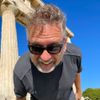Week 216: We made it back to Belgium
After four long weeks, we finally arrive in Belgium! It's been an epic journey, but we're ready for new challenges now.
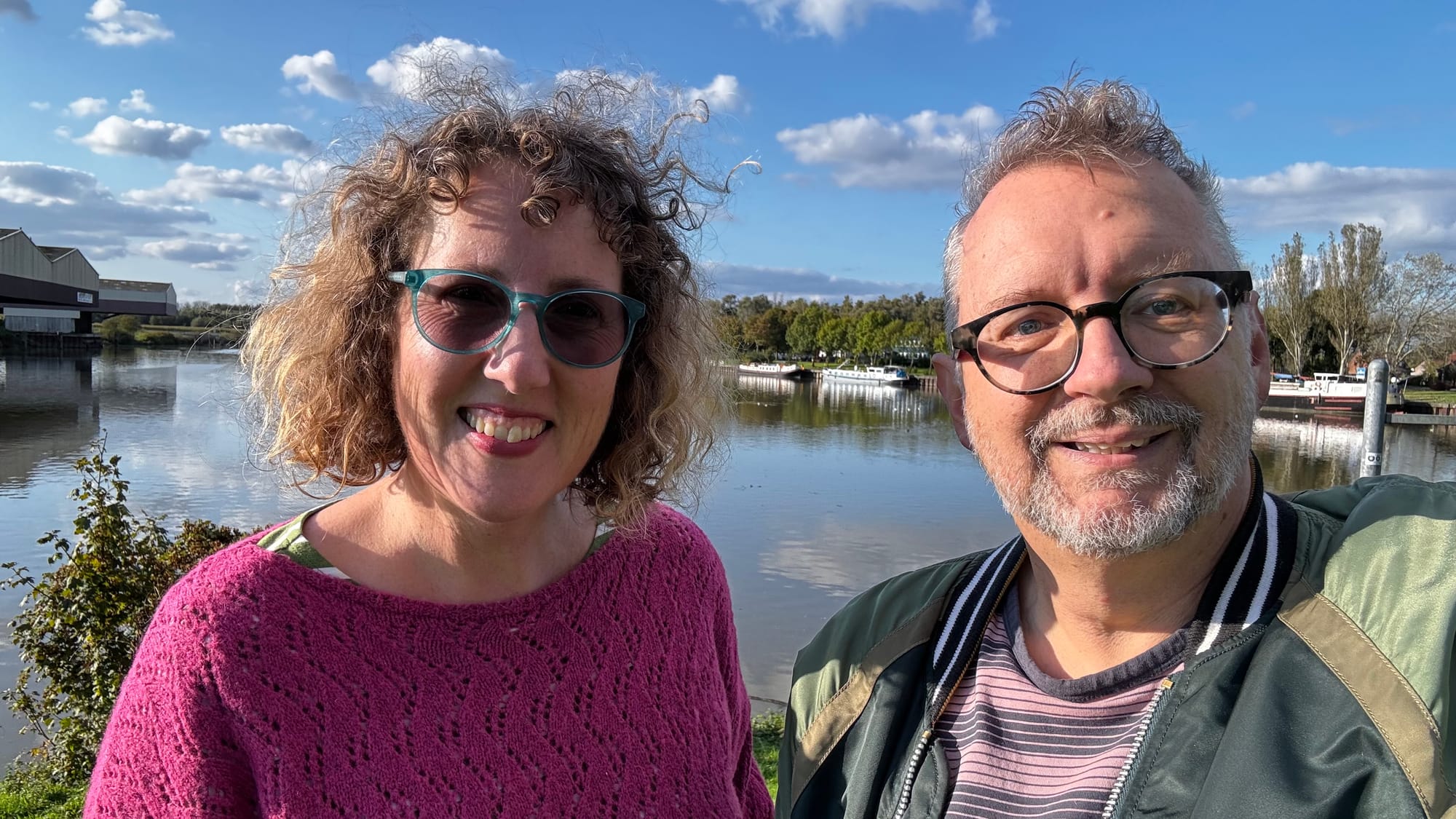
We were grinding our way along the Champagne-Bourgogne canal two weeks ago, and the thought of ever reaching Belgium felt impossible. We felt discouraged and had to remind ourselves to enjoy the journey. Since then, it's been an easy run downhill, almost literally.
Saturday, we achieved a significant milestone. We reached Belgium! We're currently moored up in Oudenaarde, where we have a winter berth. Of course, we're not stopping here yet. We have to head to Gent, introduce Clair de Lune to the rest of the architects, meet with the shipyard, and have a range of new adventures. In some ways, the easy bit is over. We've successfully navigated learning how to pilot a 27-metre, 100-ton boat, without a bow thruster, through locks barely wider than she is, across two-thirds of France. And all that without too many bangs and scrapes.
A week ago, we were heading up to Reims. This has always been our first major milestone, as it's about halfway as the crow flies. The waterway was initially closed, which delayed our initial departure, so it was good to pass through without any issues. From Reims, the canals started getting bigger and busier.
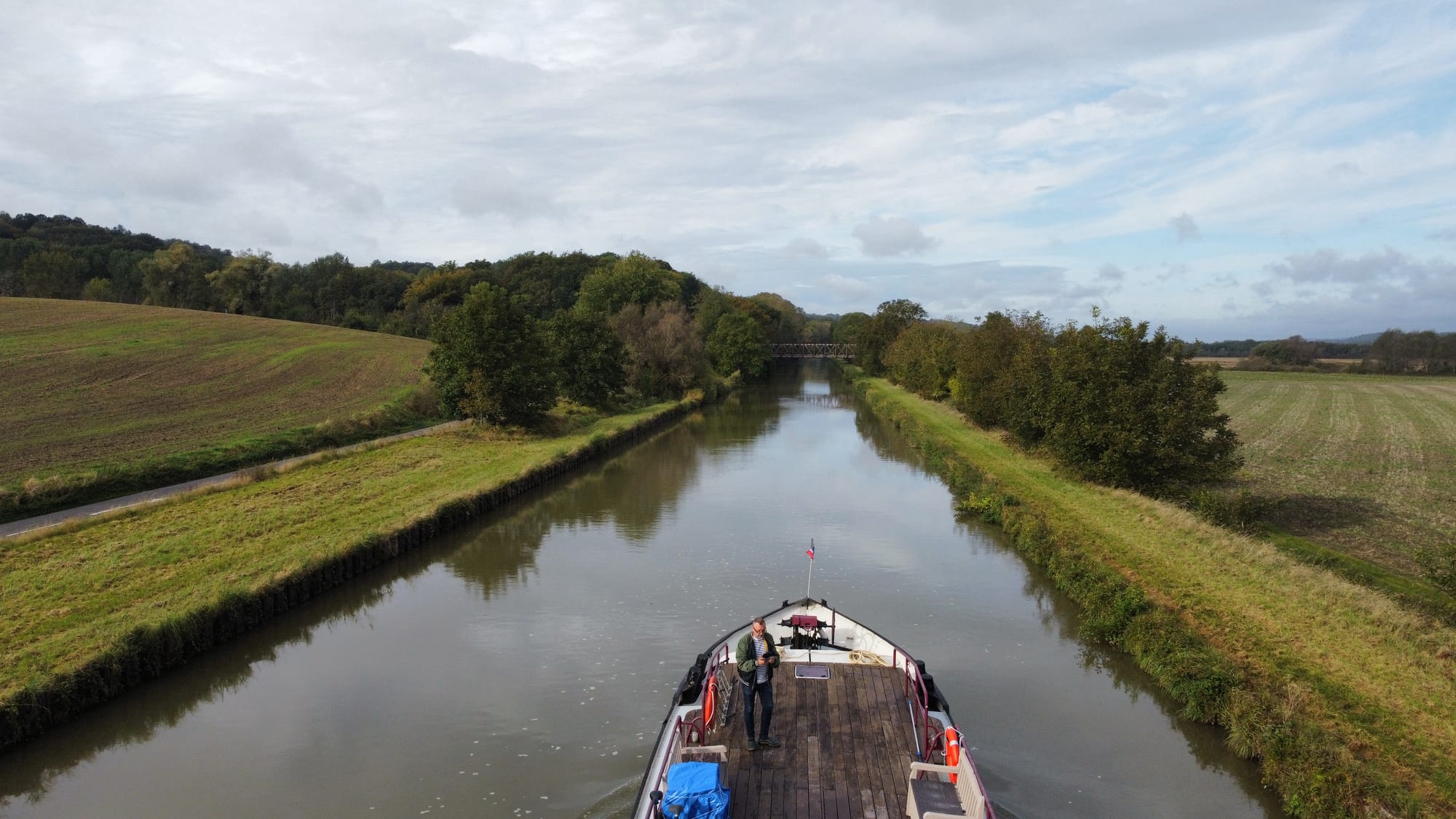
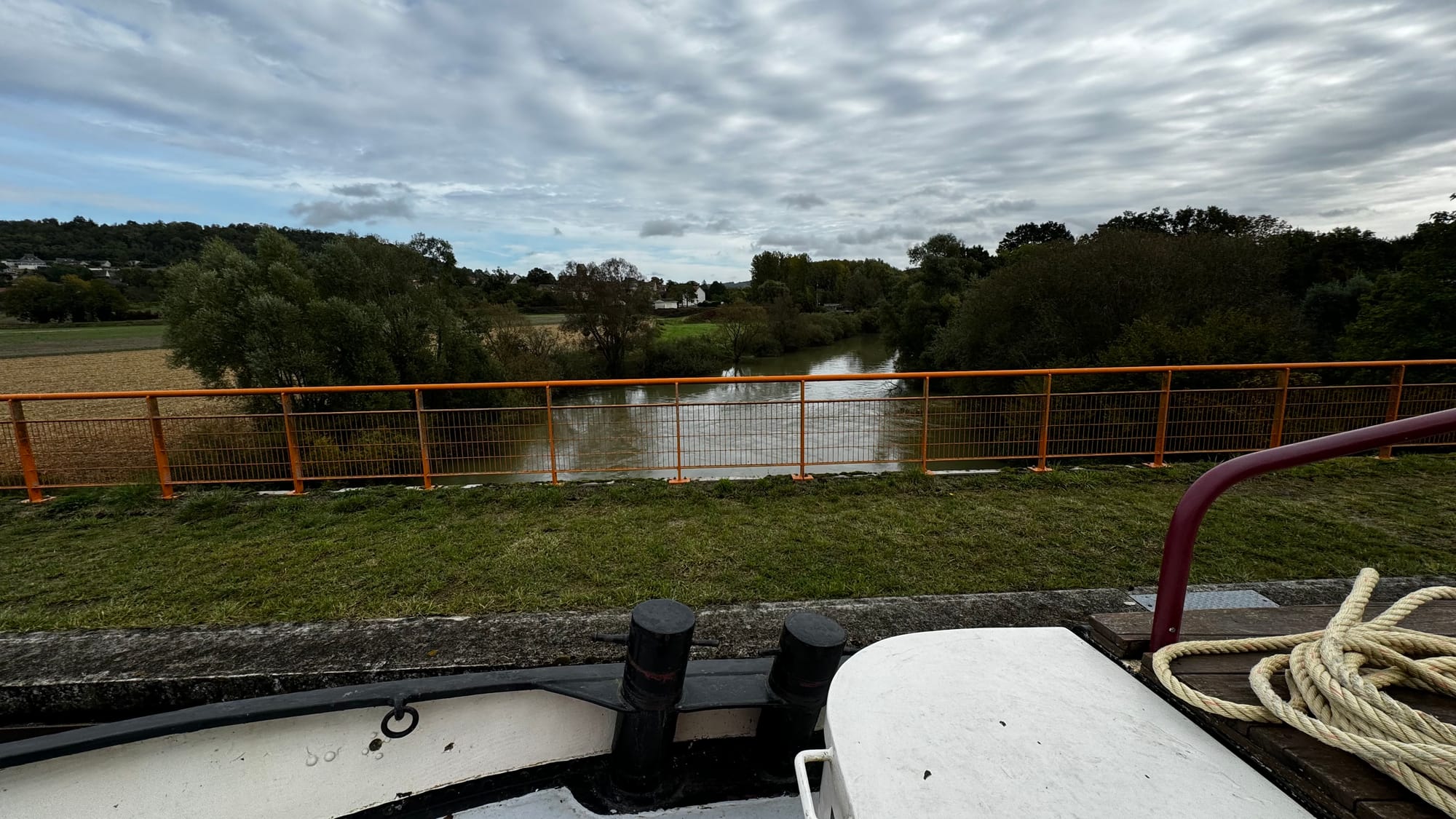

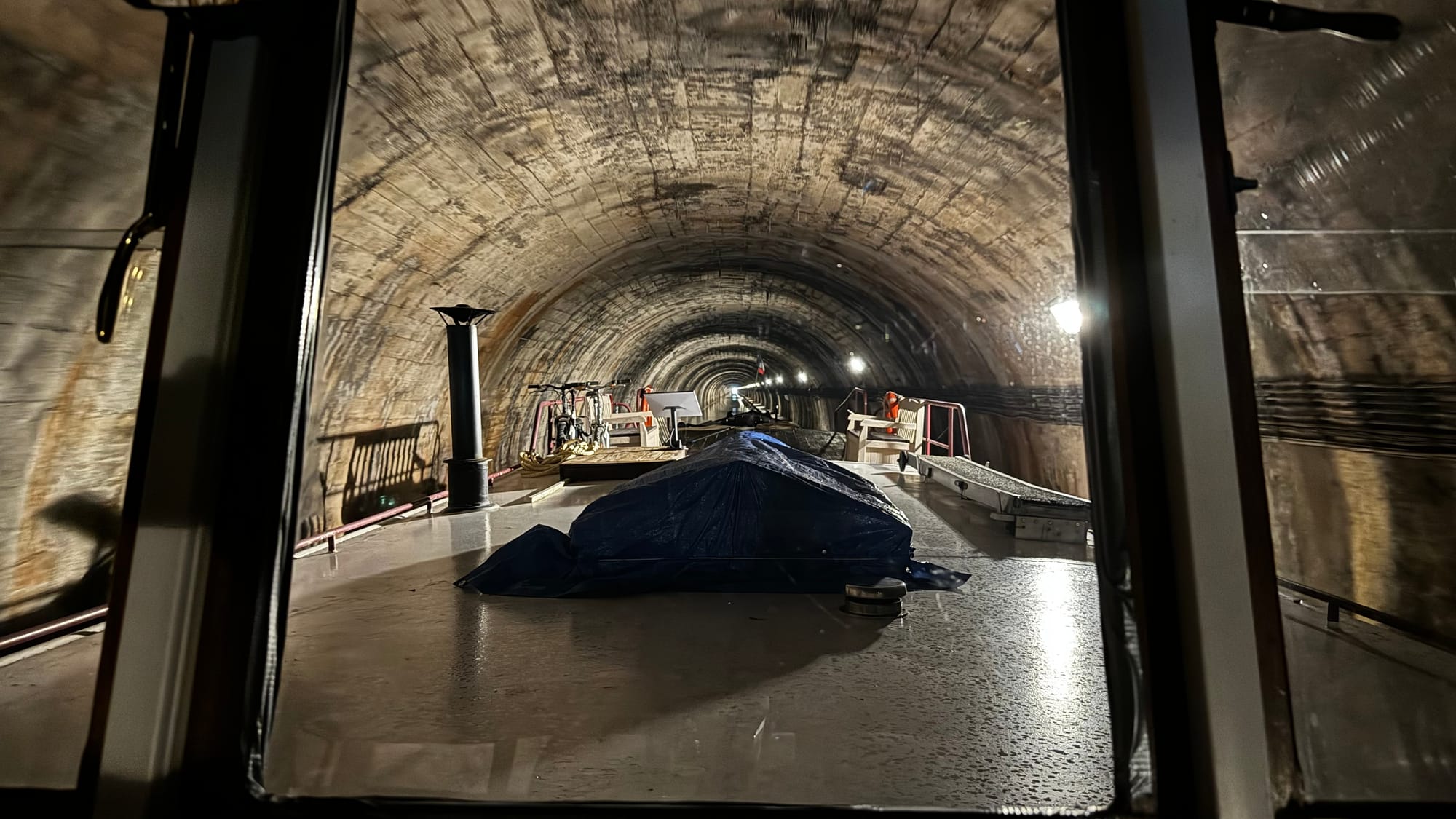
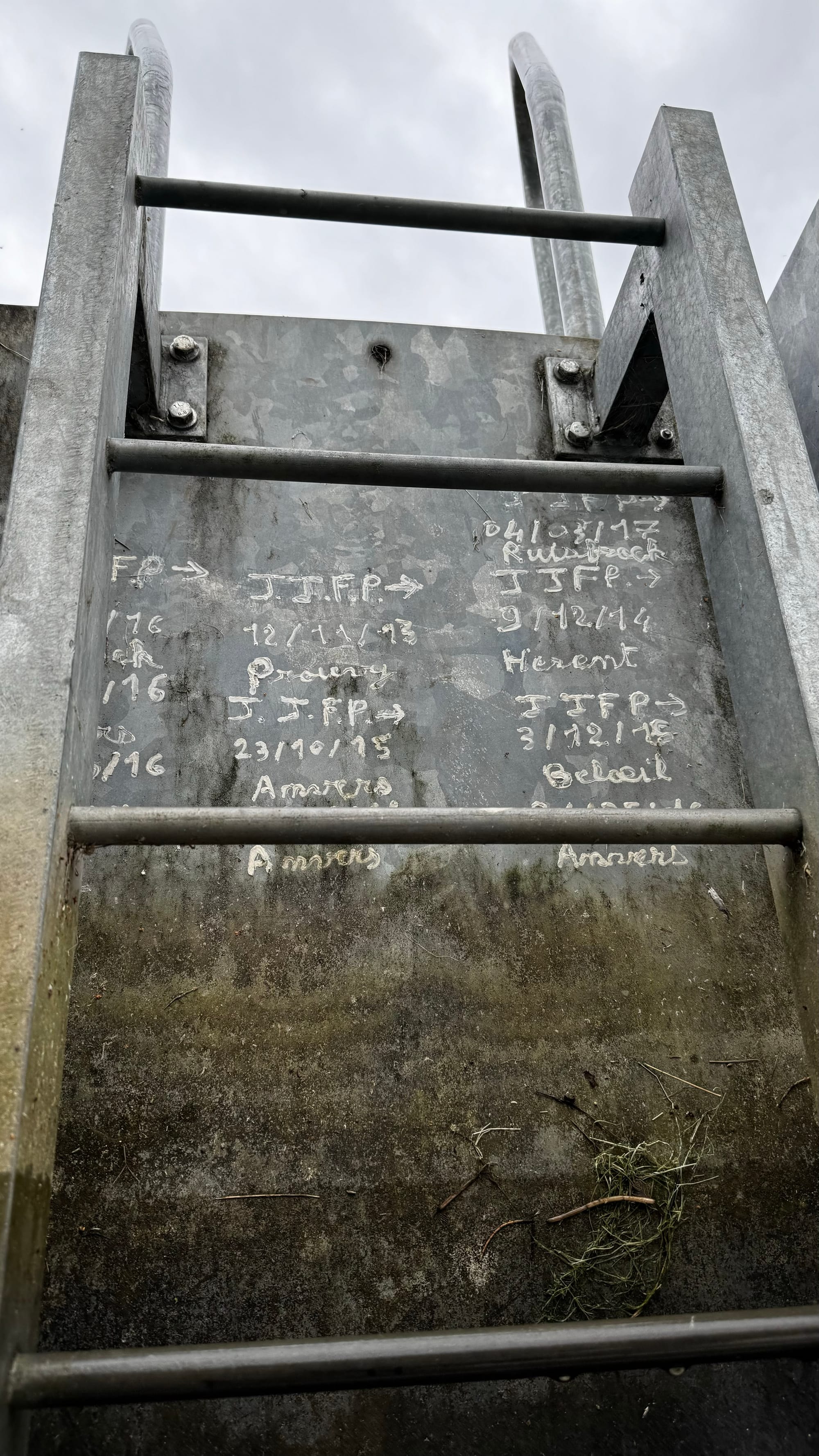
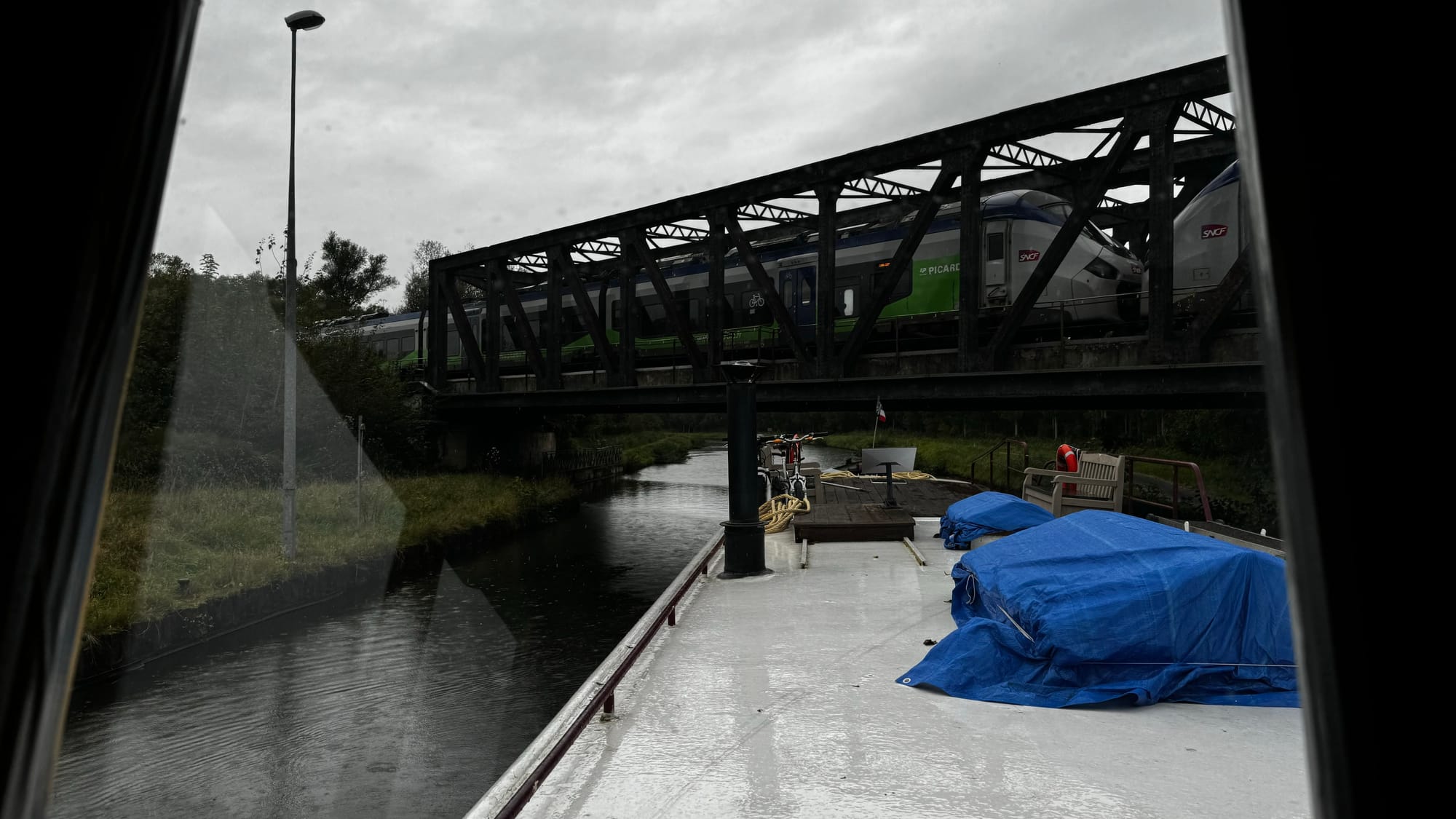
Aqueducts, tunnels and graffiti in locks.
From the 38's we'd been meeting, we were now coming across 55's and 110m boats. Mini-ships that dominate the canal and are much higher. No longer any danger of hitting a bridge, some were over 5 meters tall.
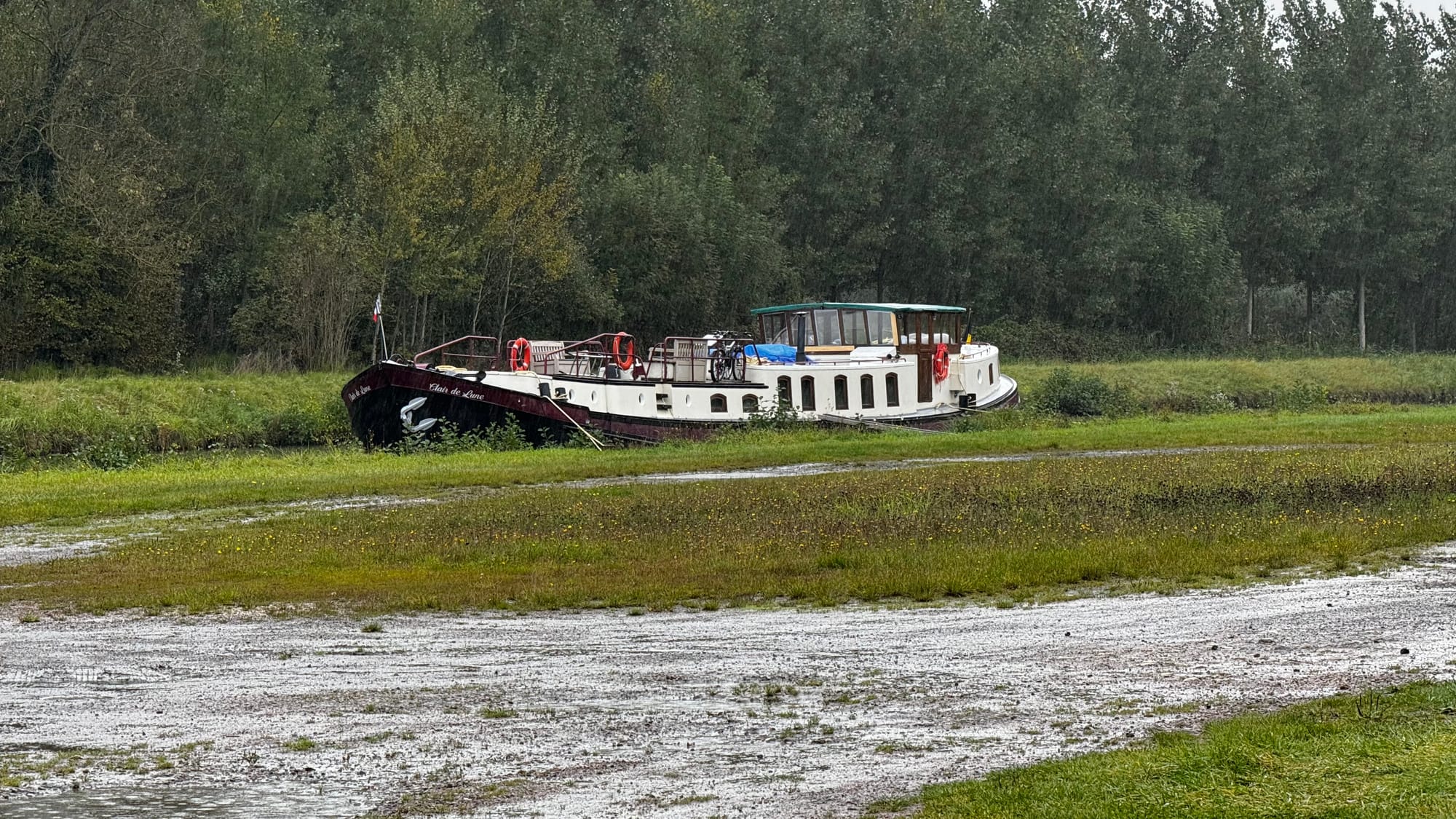
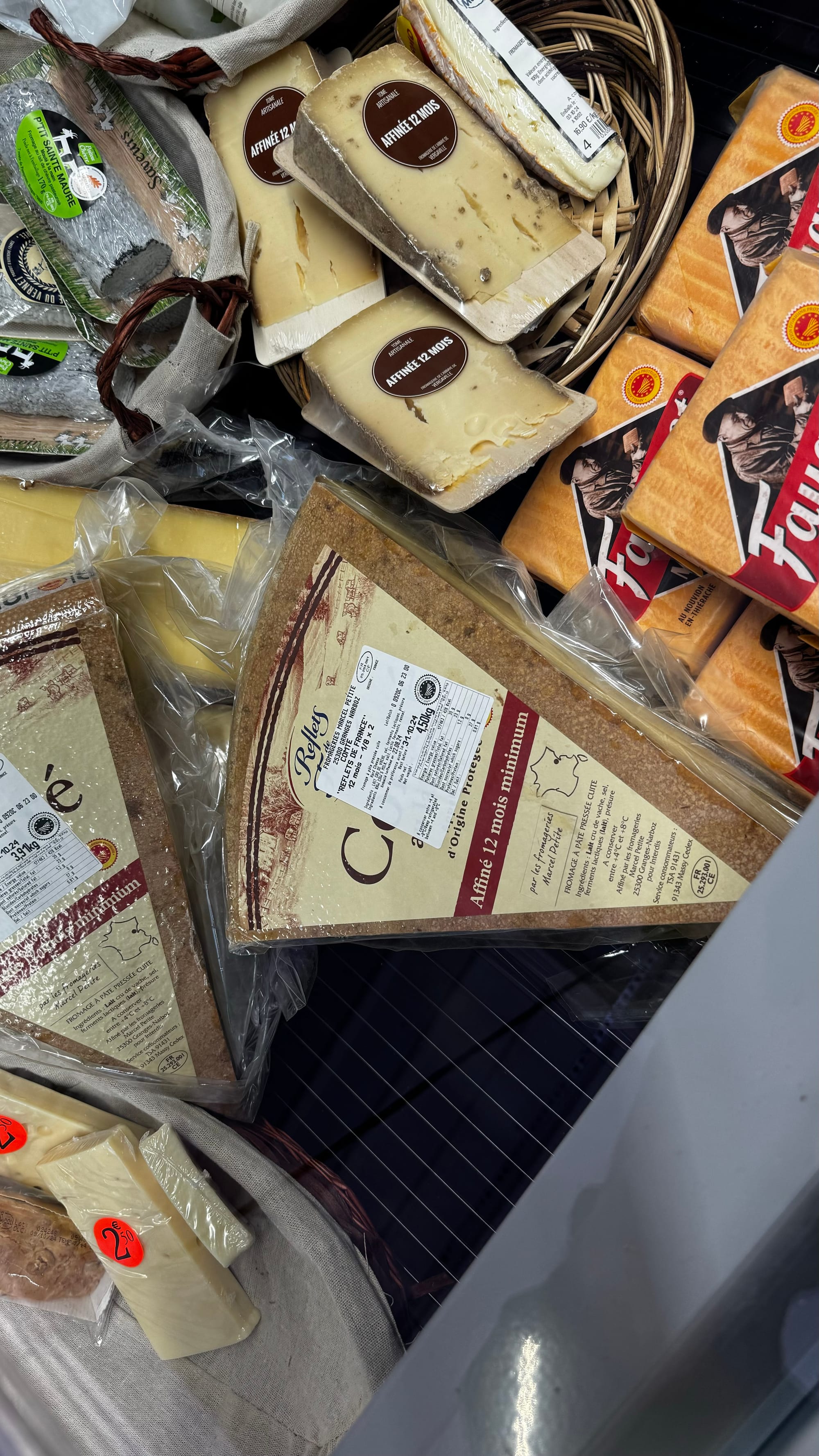
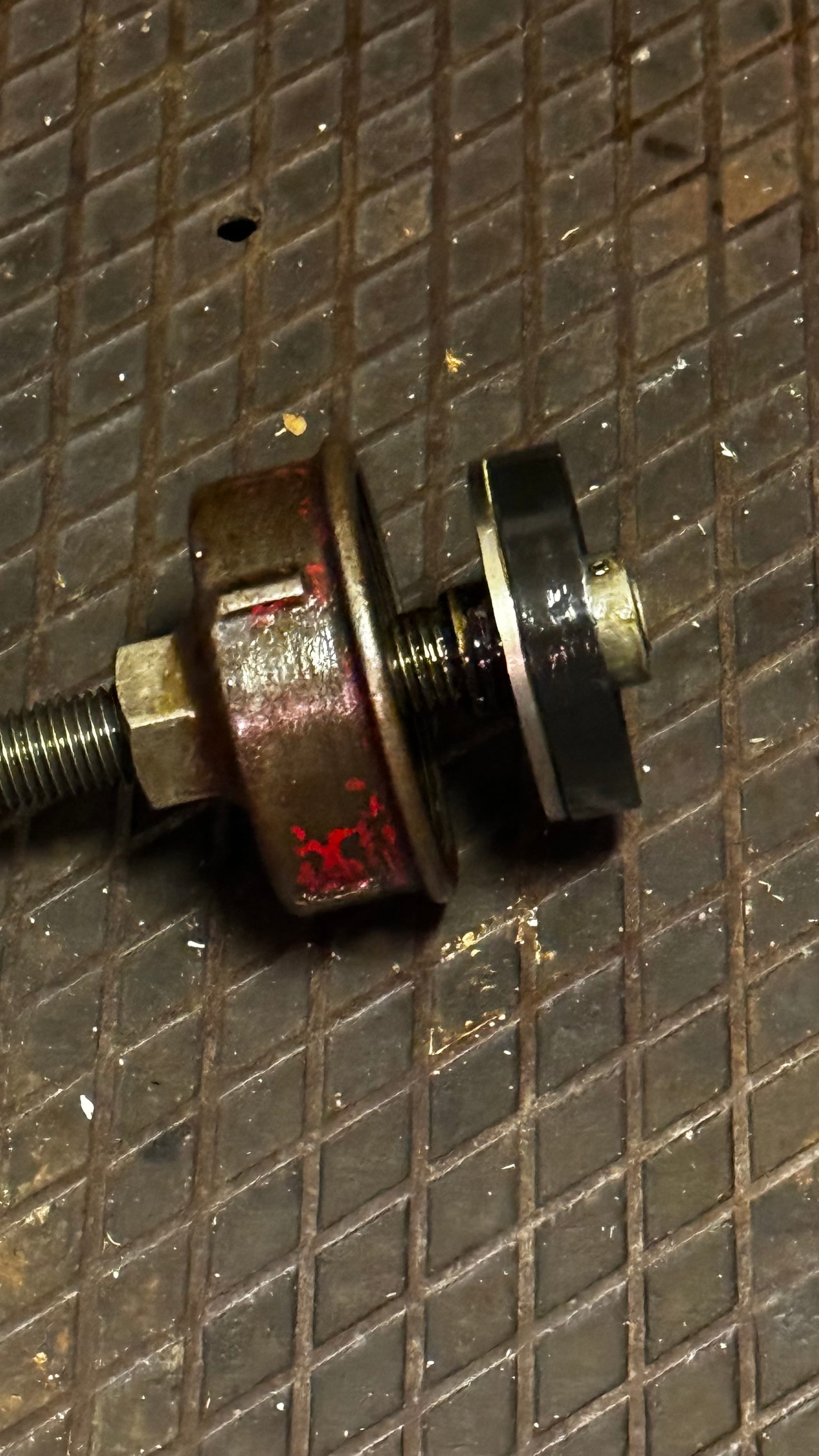
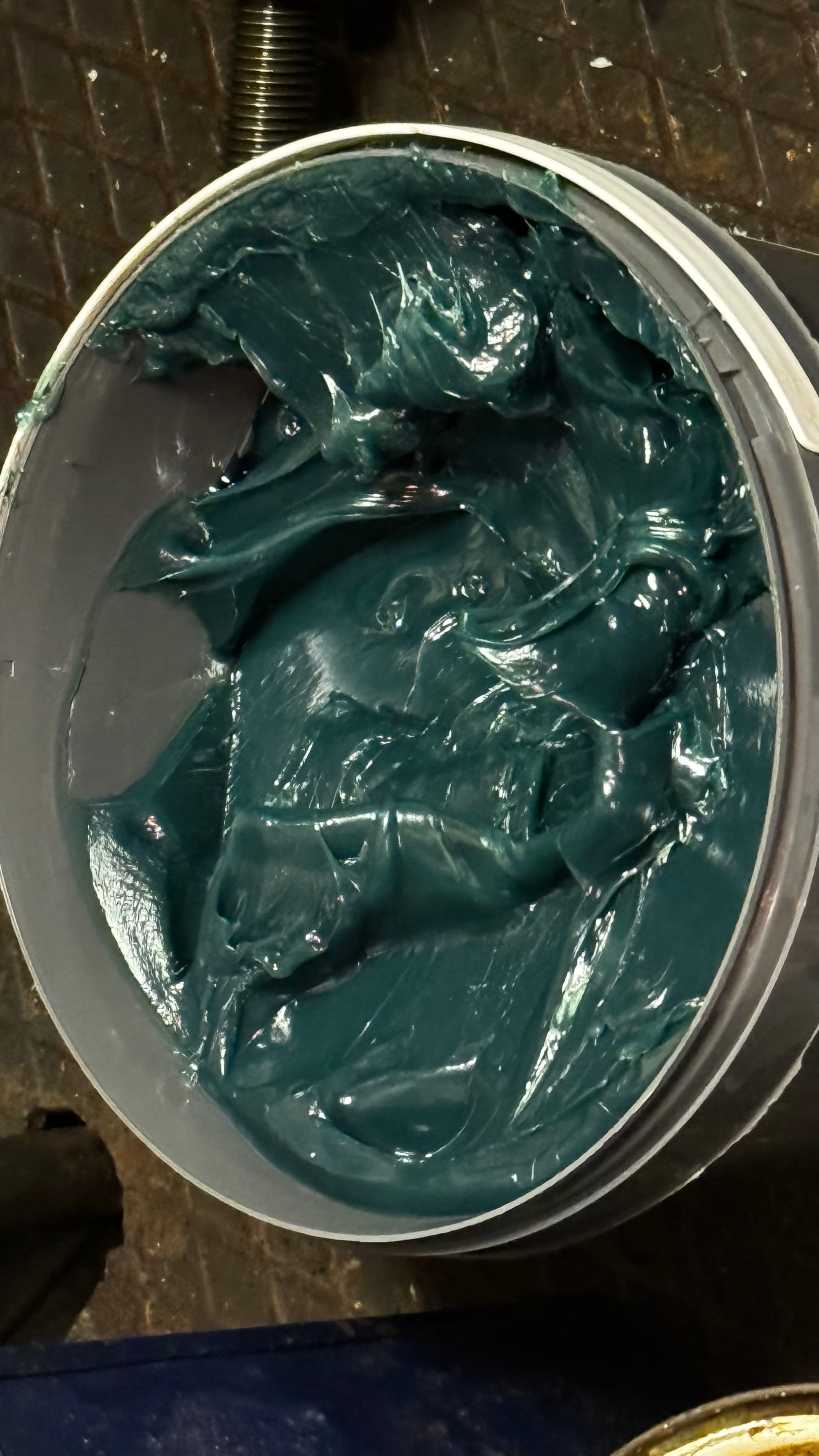
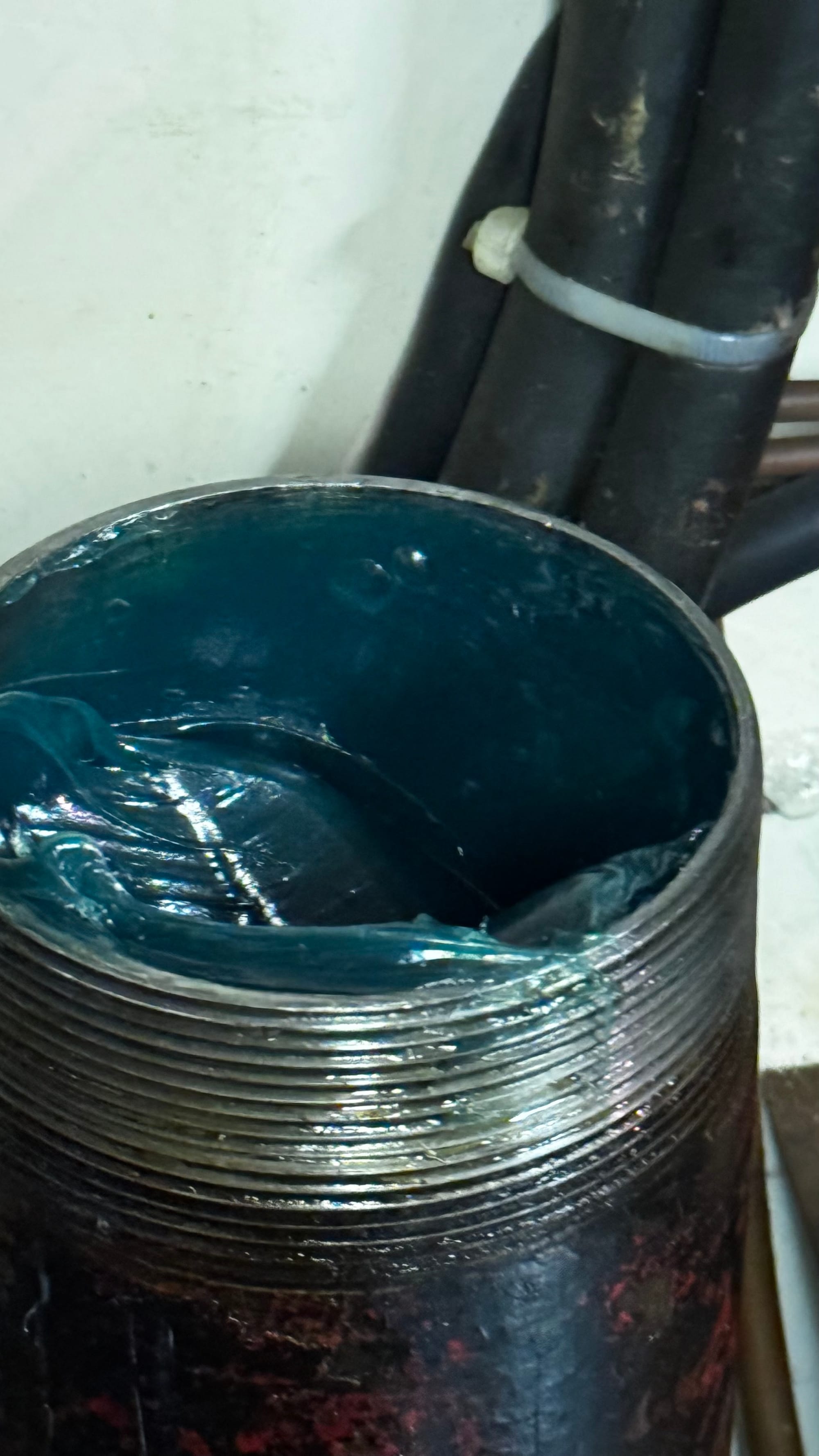
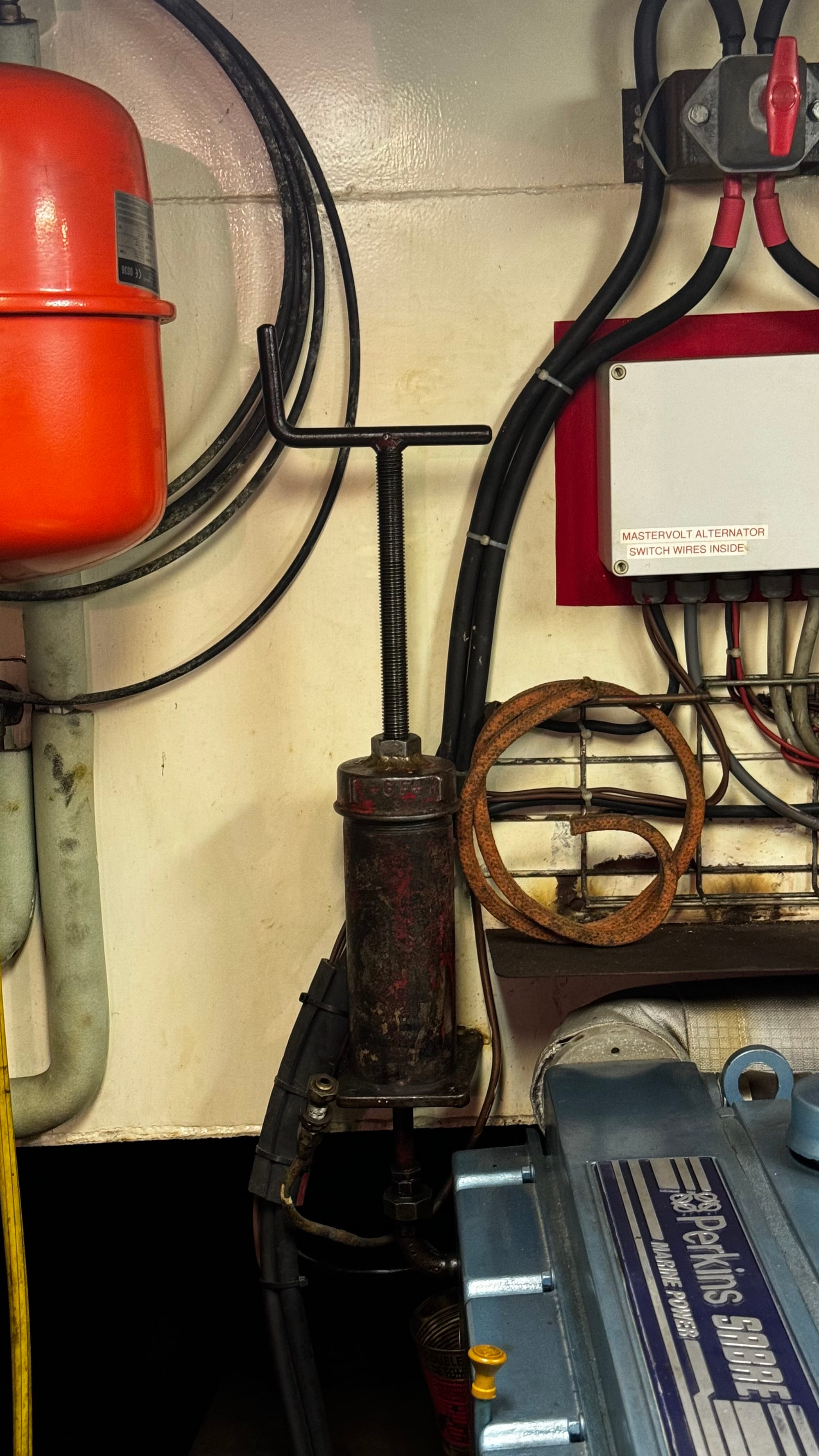
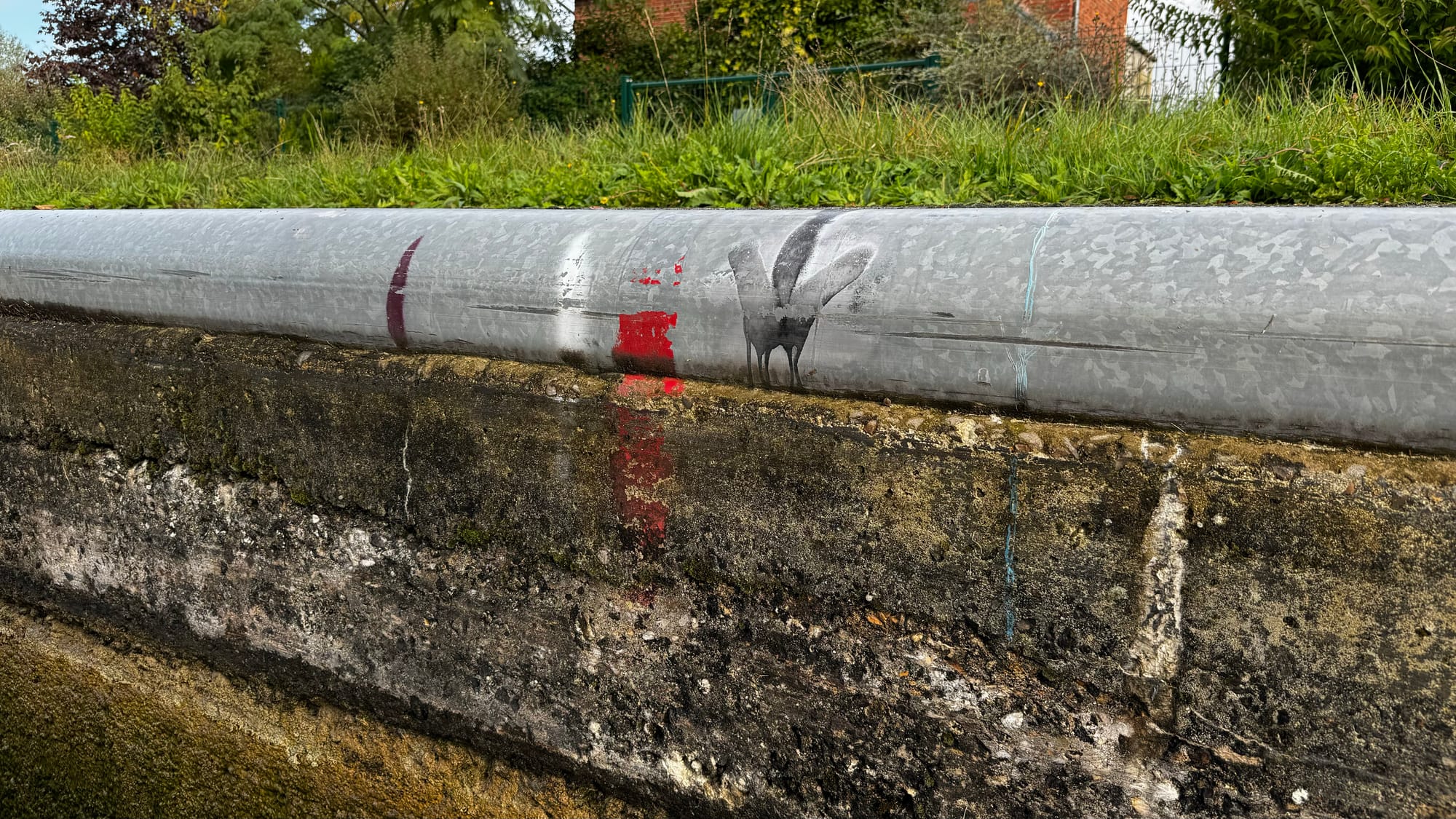
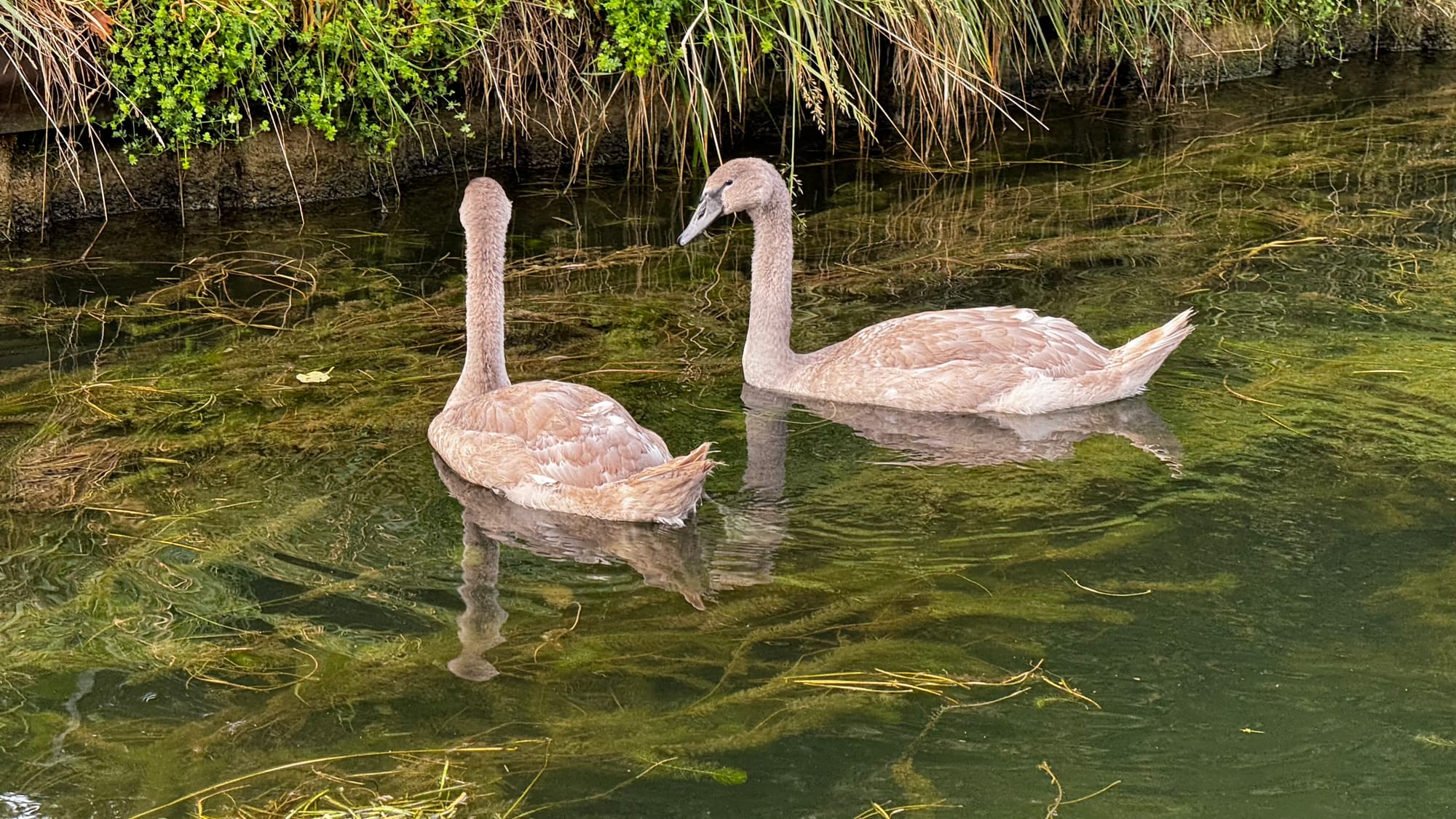
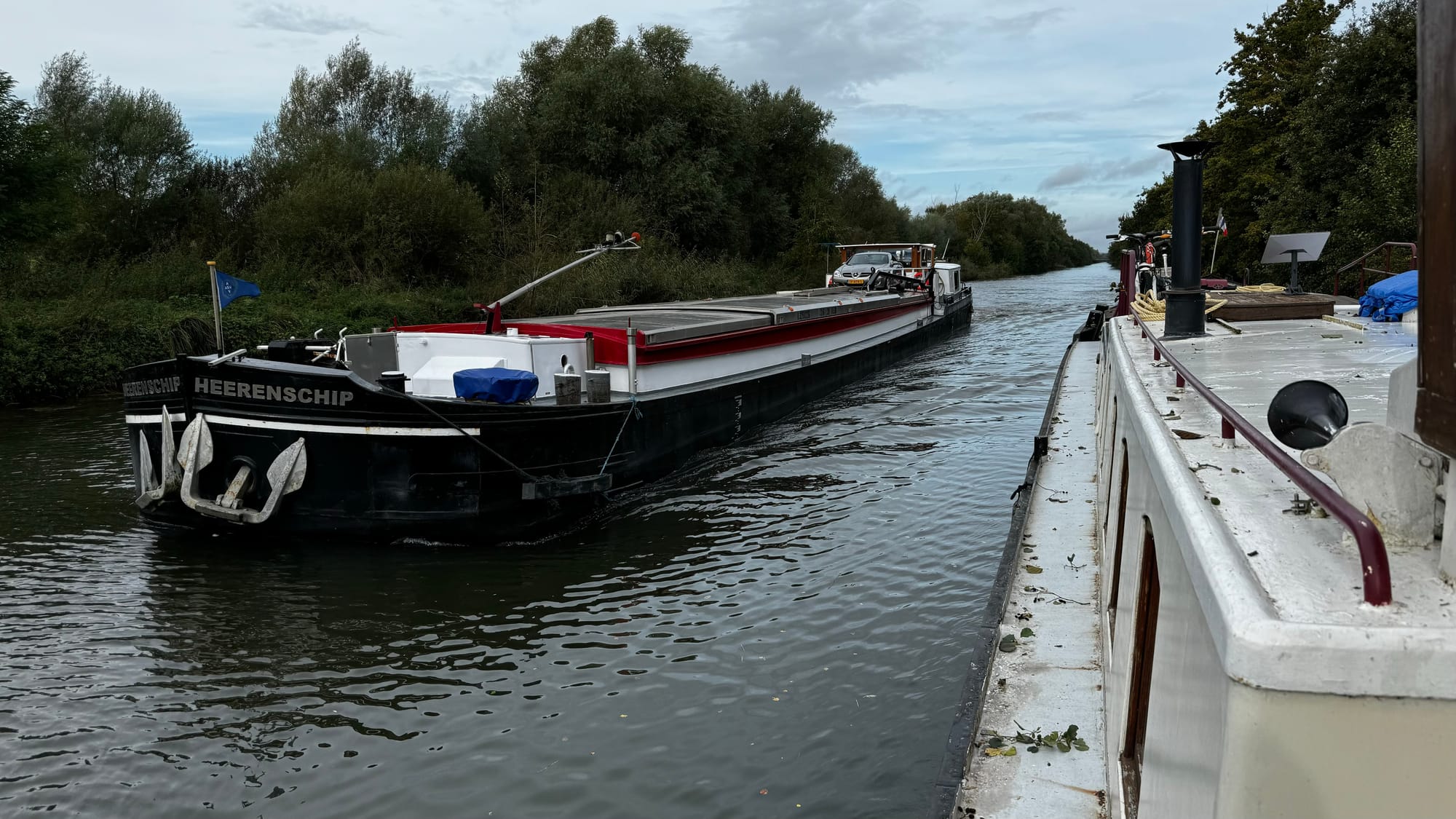
We've been going long enough, I needed to repack the greaser! On some of the canals, the commercials mark their stopping points (handy reference for us too!)
This part of France is very industrial, which is not a surprise. Canals and industry go hand in hand. They certainly weren't built initially for tourism. It's also the heart of World War One territory.
A large part of our journey paralleled the River Somme. The Somme Offensive is one of the deadliest battles in human history. Three million soldiers fought here of whom almost one million were killed or wounded. We passed memorials to towns that have been wiped off the map and were never rebuilt due to being "red zoned" at the end of the war.
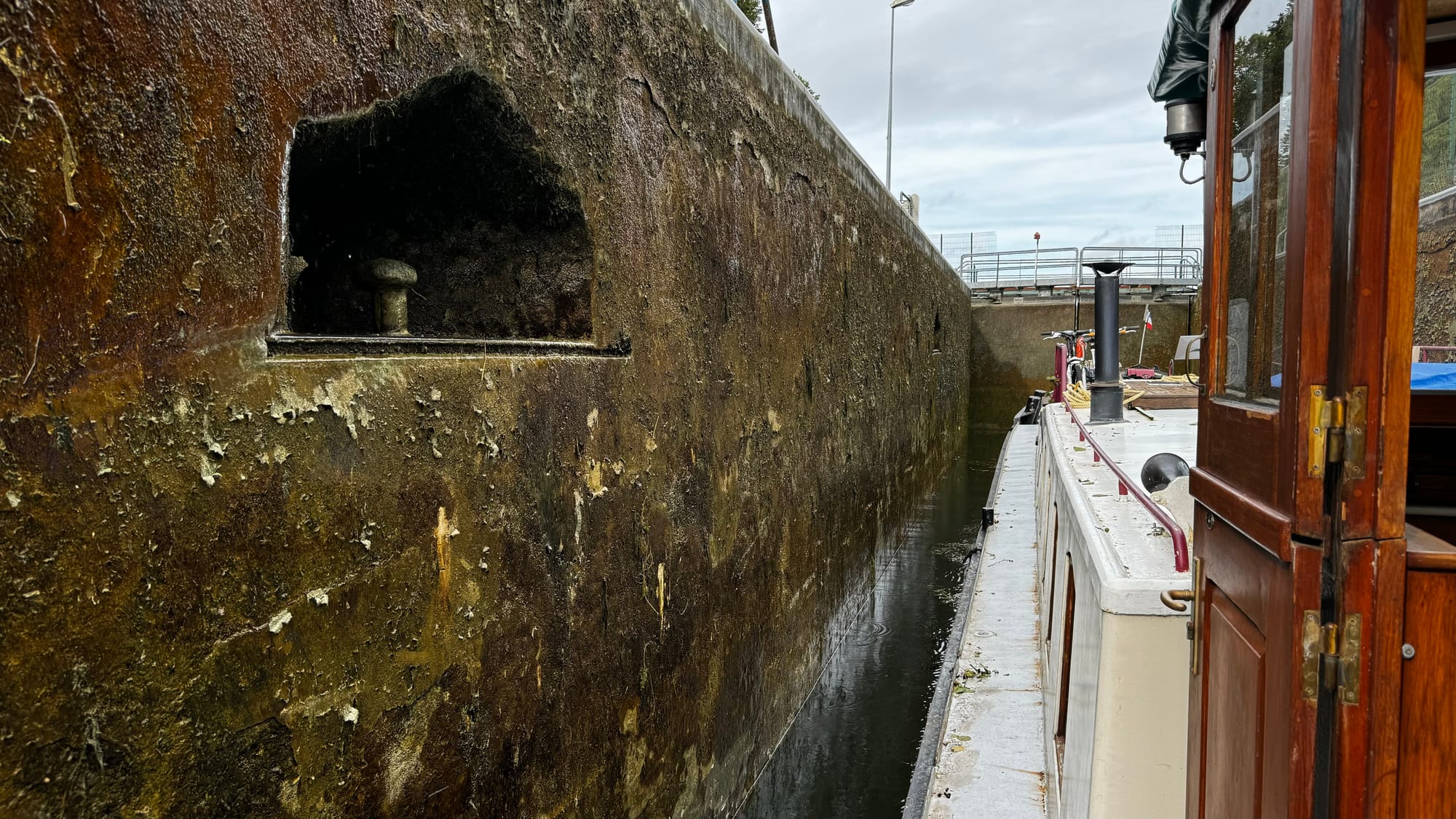
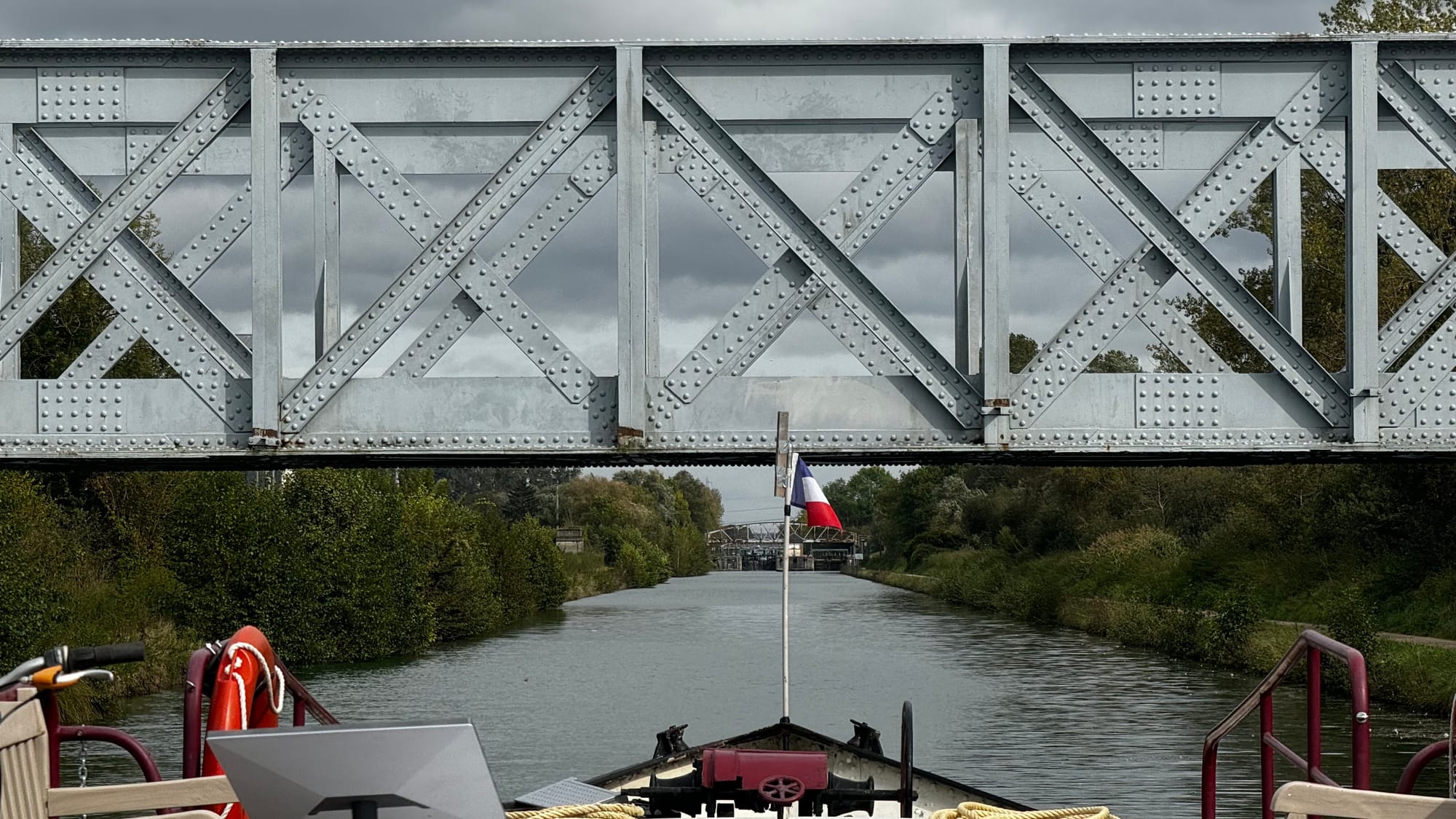
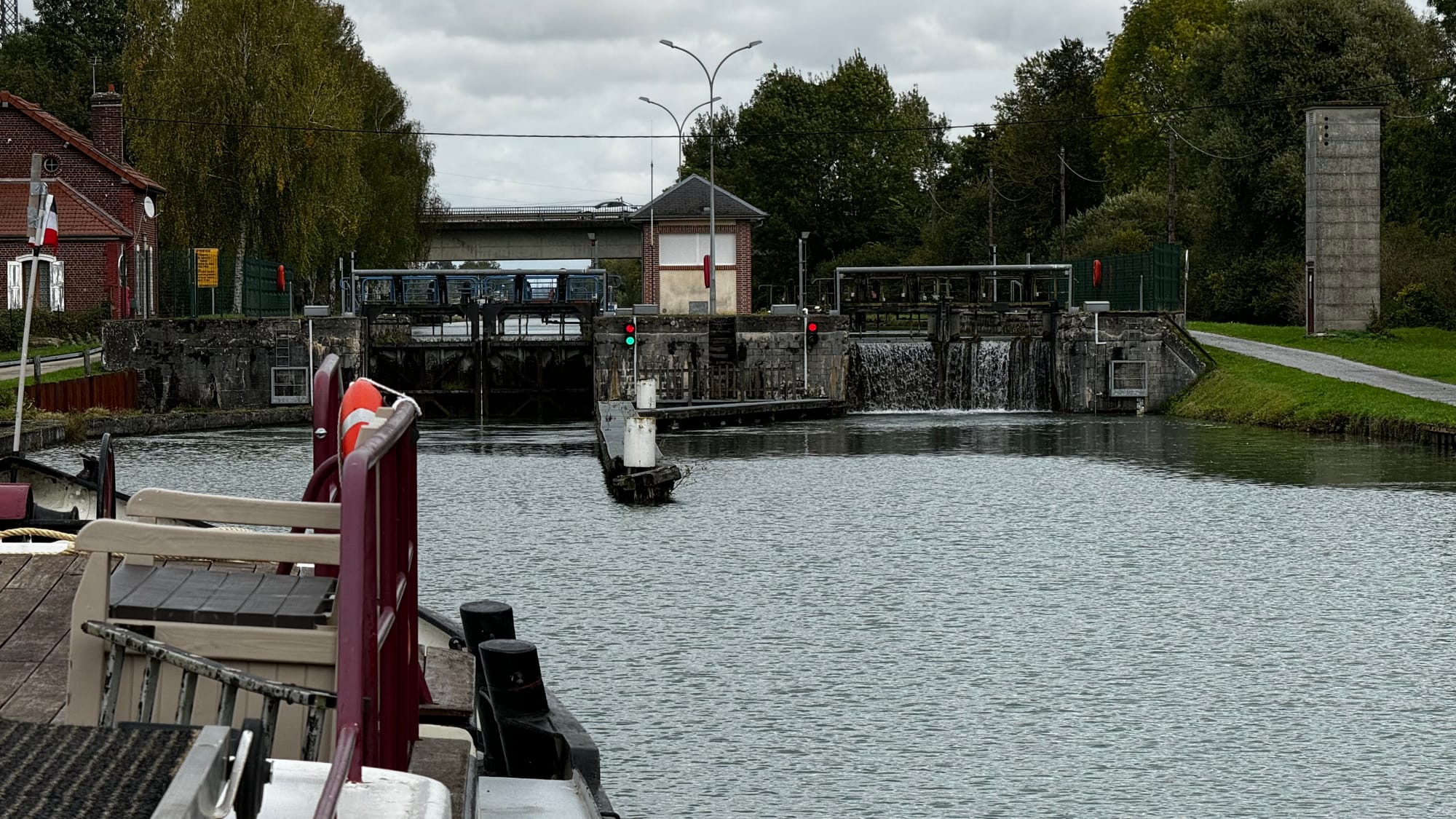
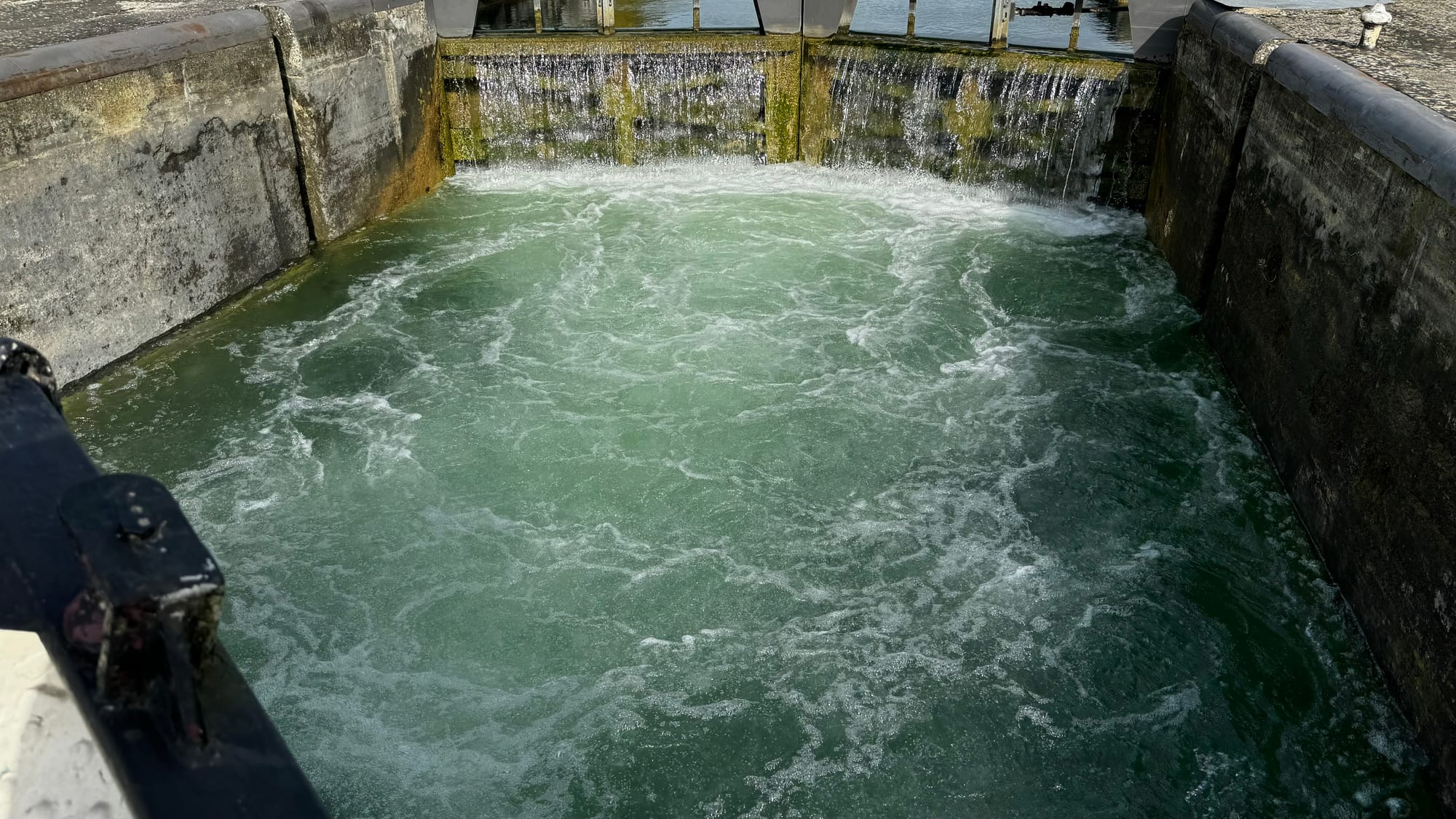
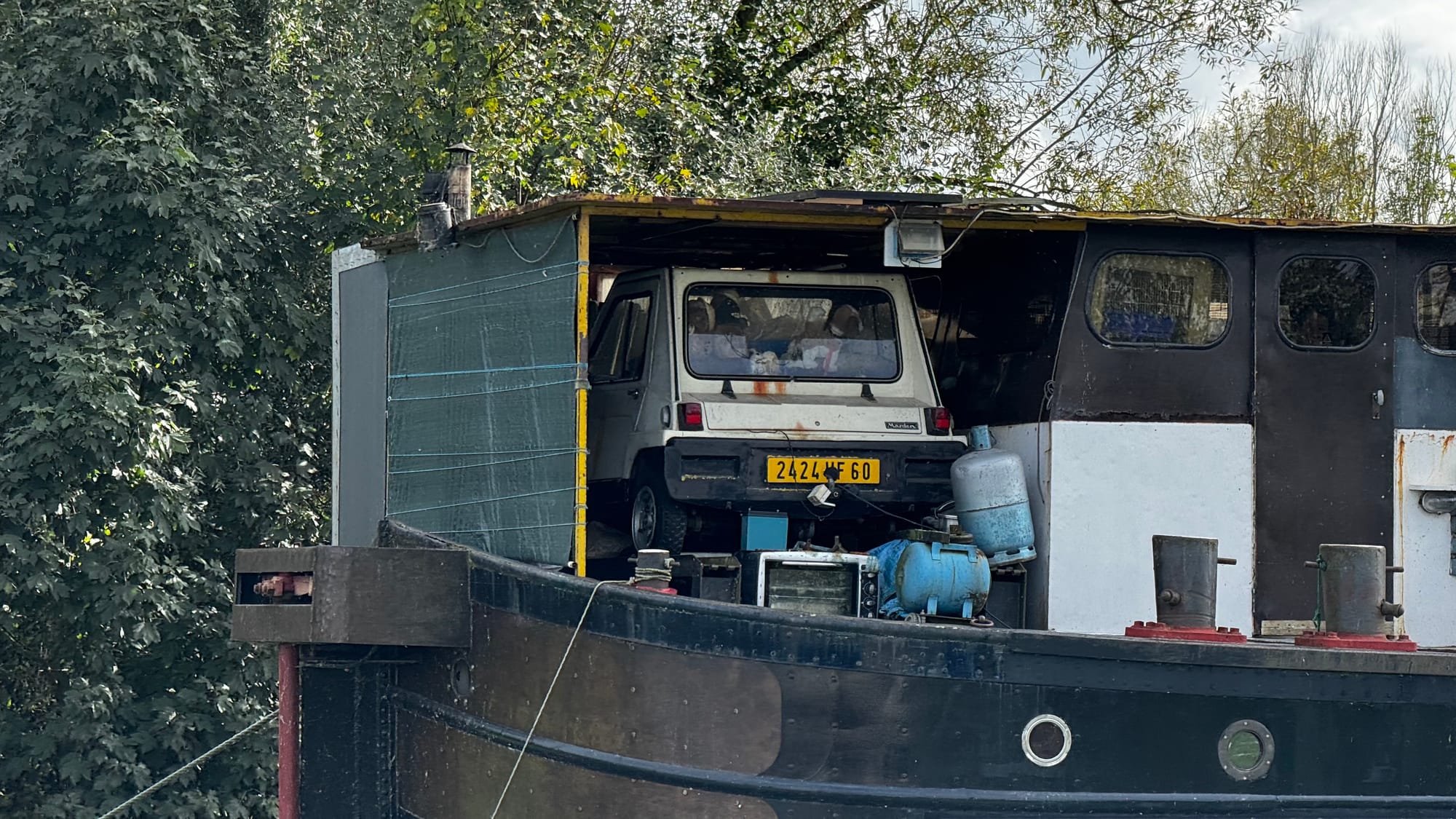
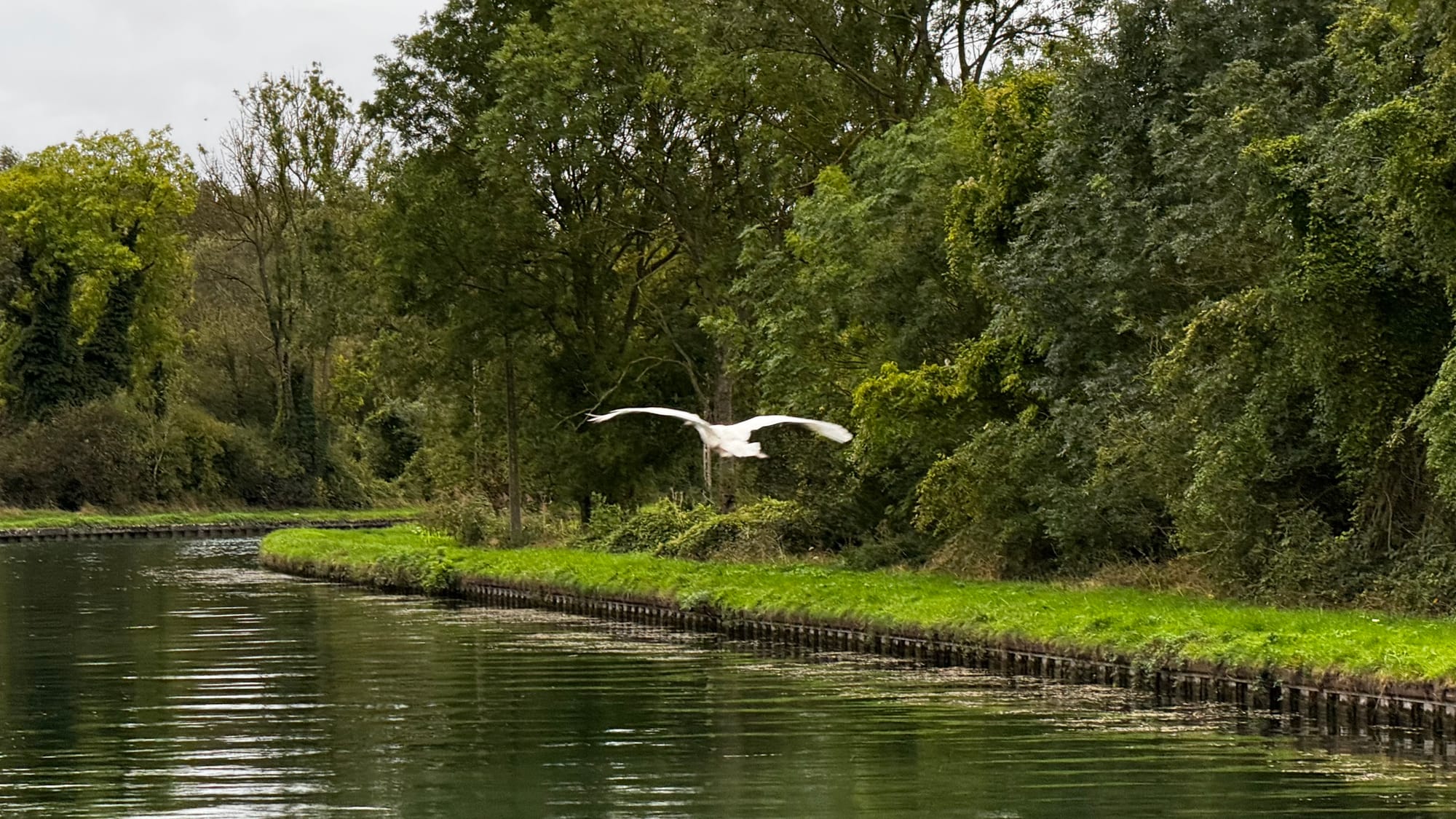
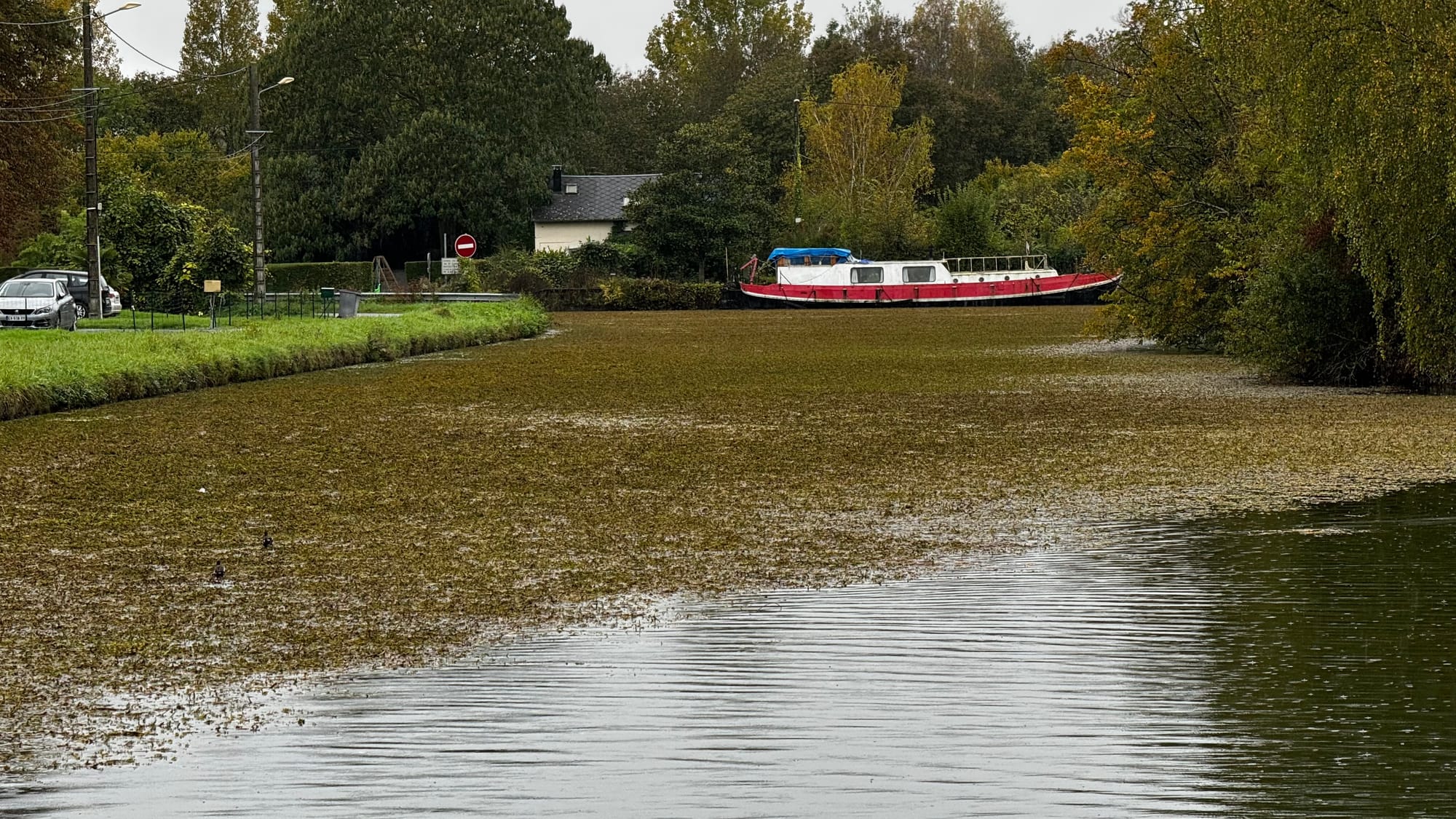
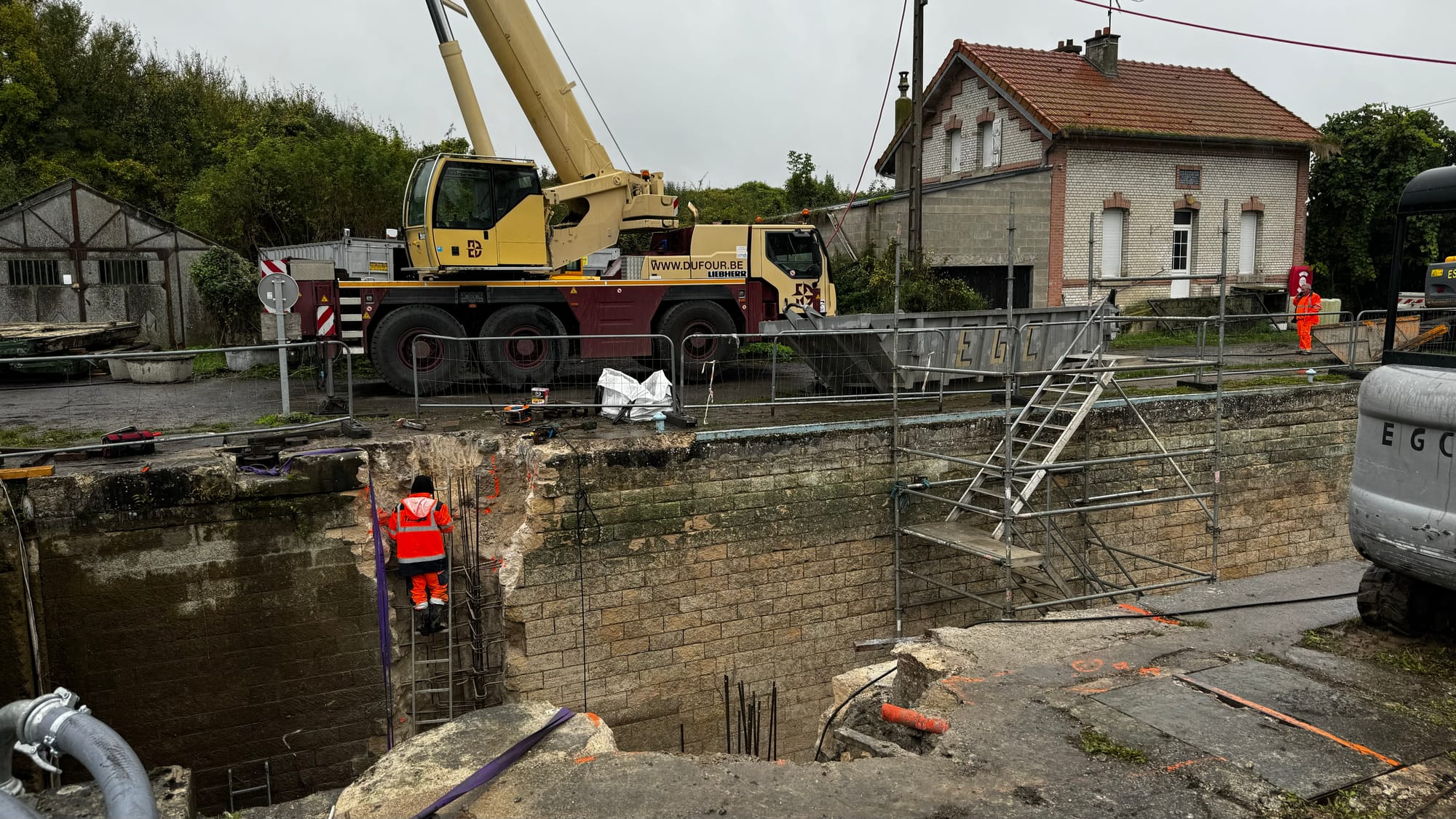
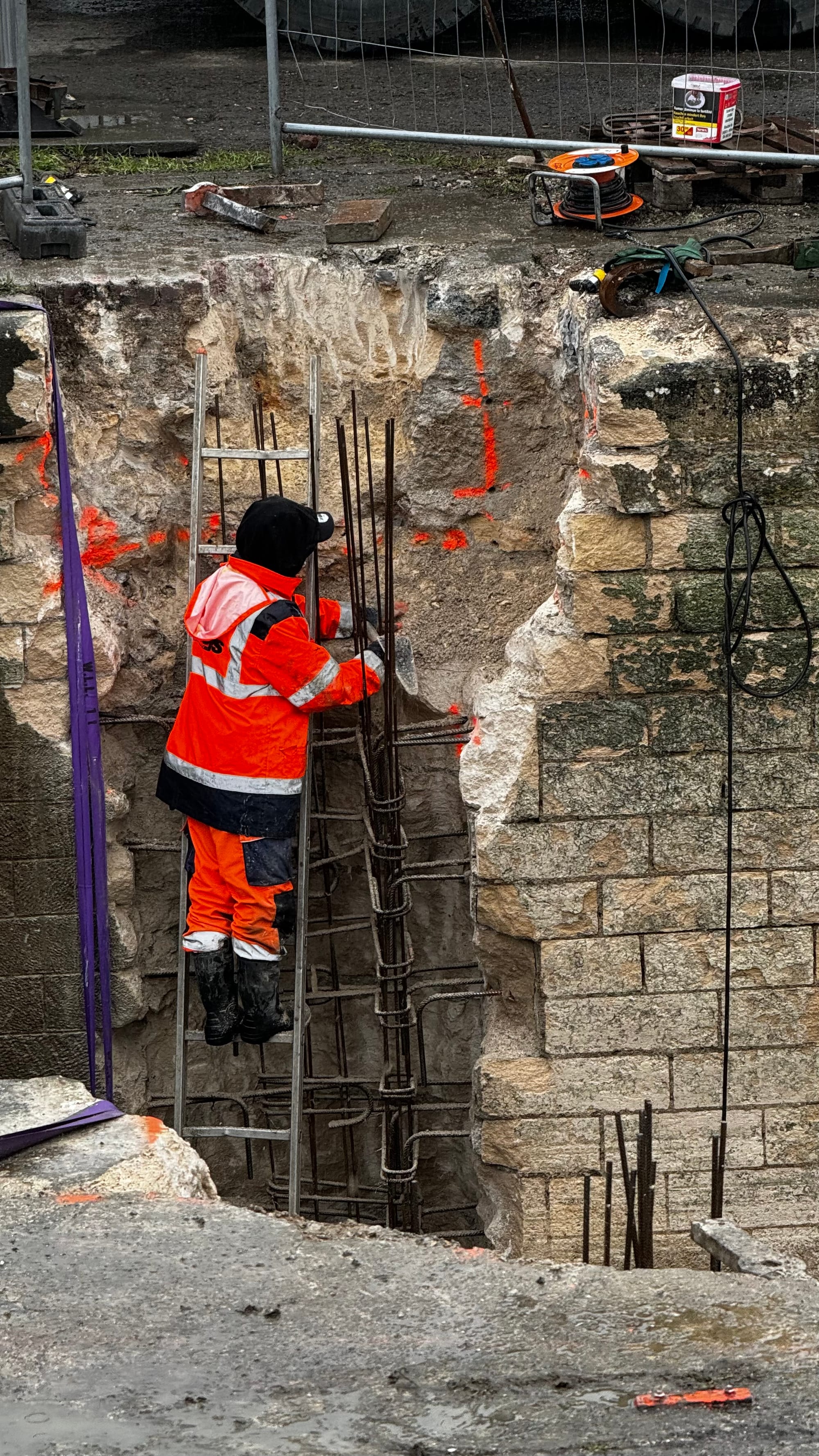
Bigger locks, double locks and locks being renovated.
Even today, through this stretch of the country, there are "red zone" regions – areas of land so devastated by artillery and chemicals that they remain uninhabitable. Each year in this region of France, the farmers unearth about 900 tonnes of unexploded ordnance that is collected for disposal. Around Ypres in Belgium, it's even worse.
At times the journey was eerie. The canals quiet, overgrown and with the cold, wet weather, you could imagine troops hiding in the undergrowth. The canals were important during World War One still. In fact, Clair de Lune was at one point called A.S.270 – a British supply vessel.
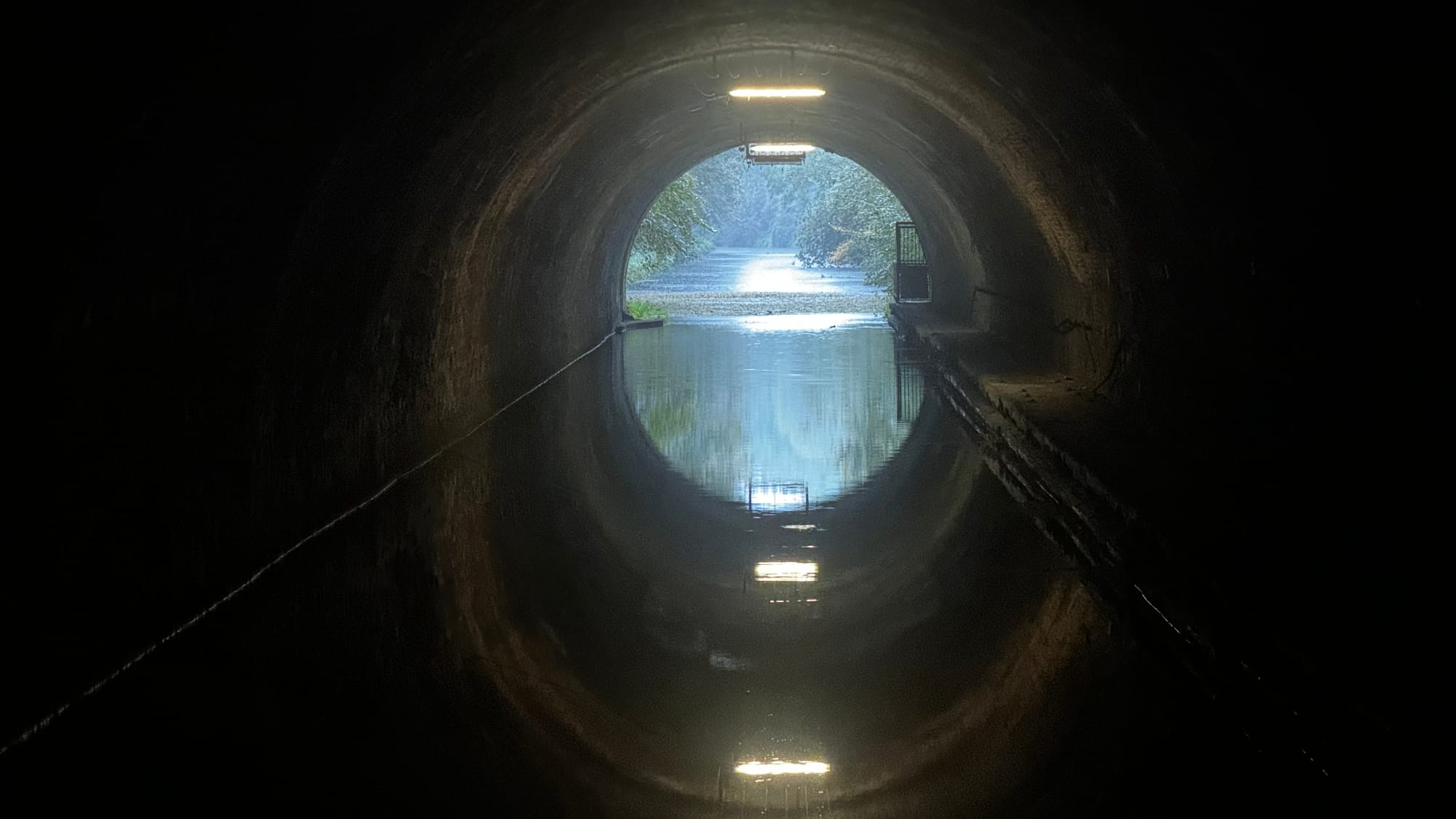
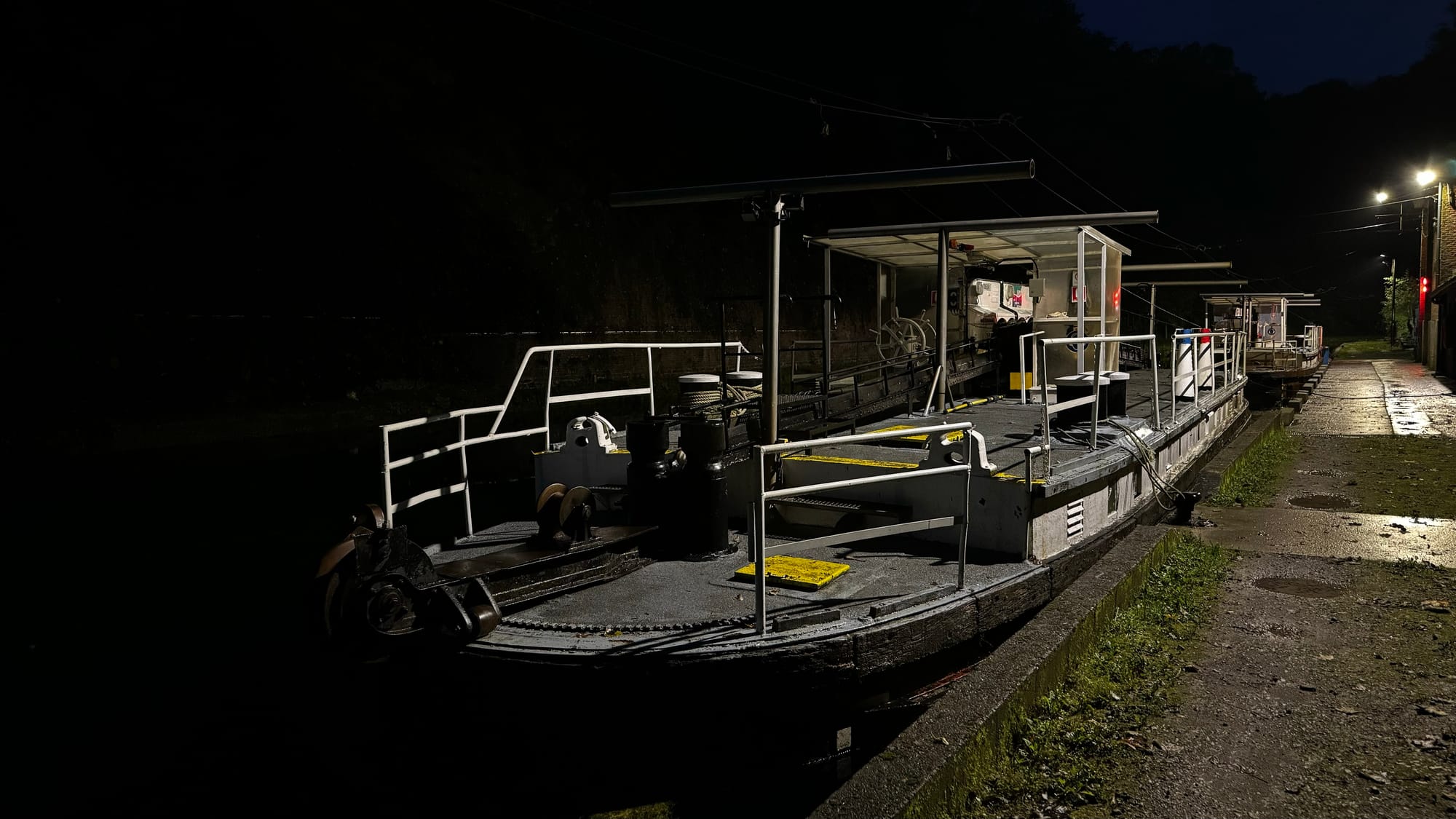
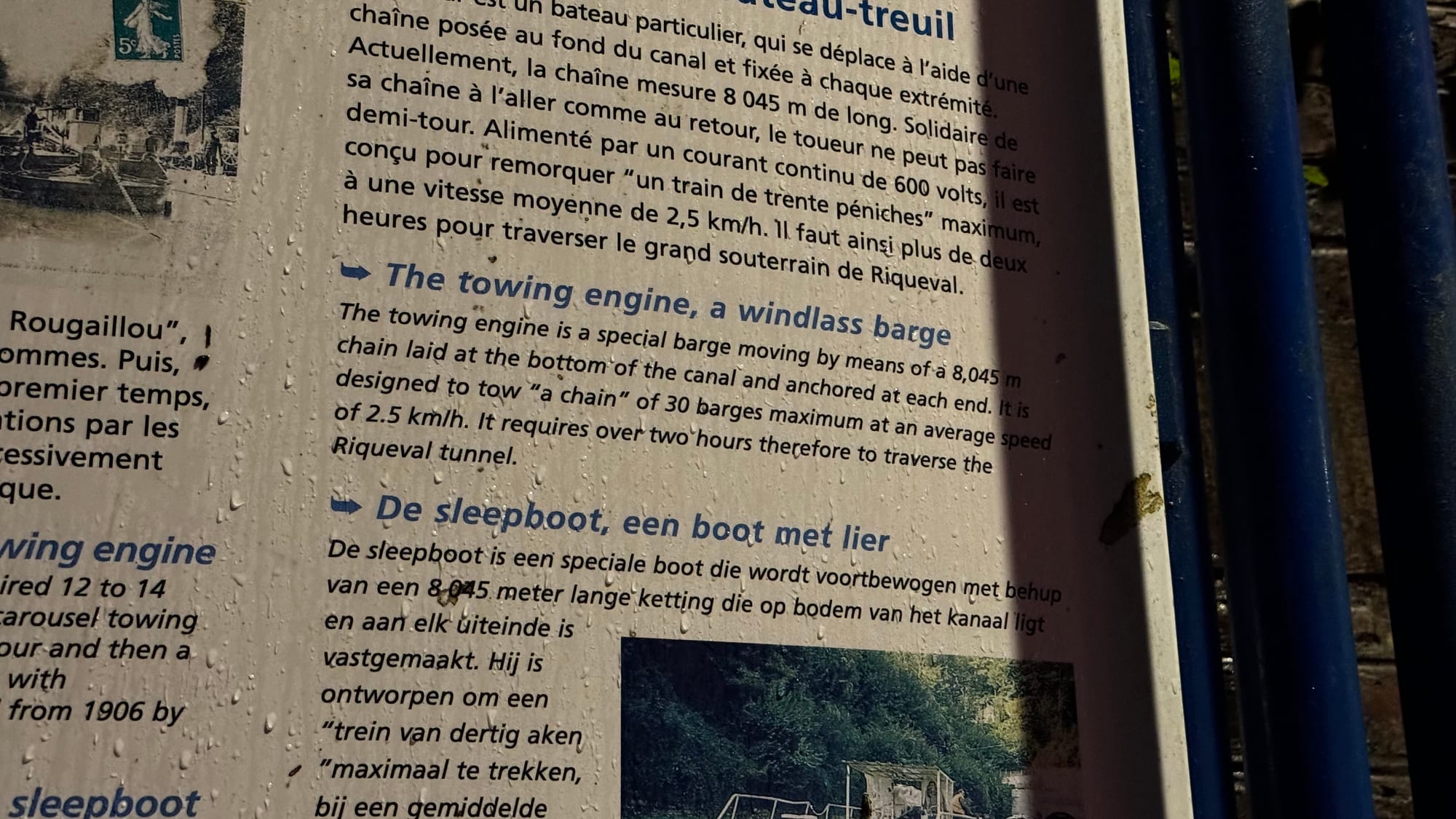
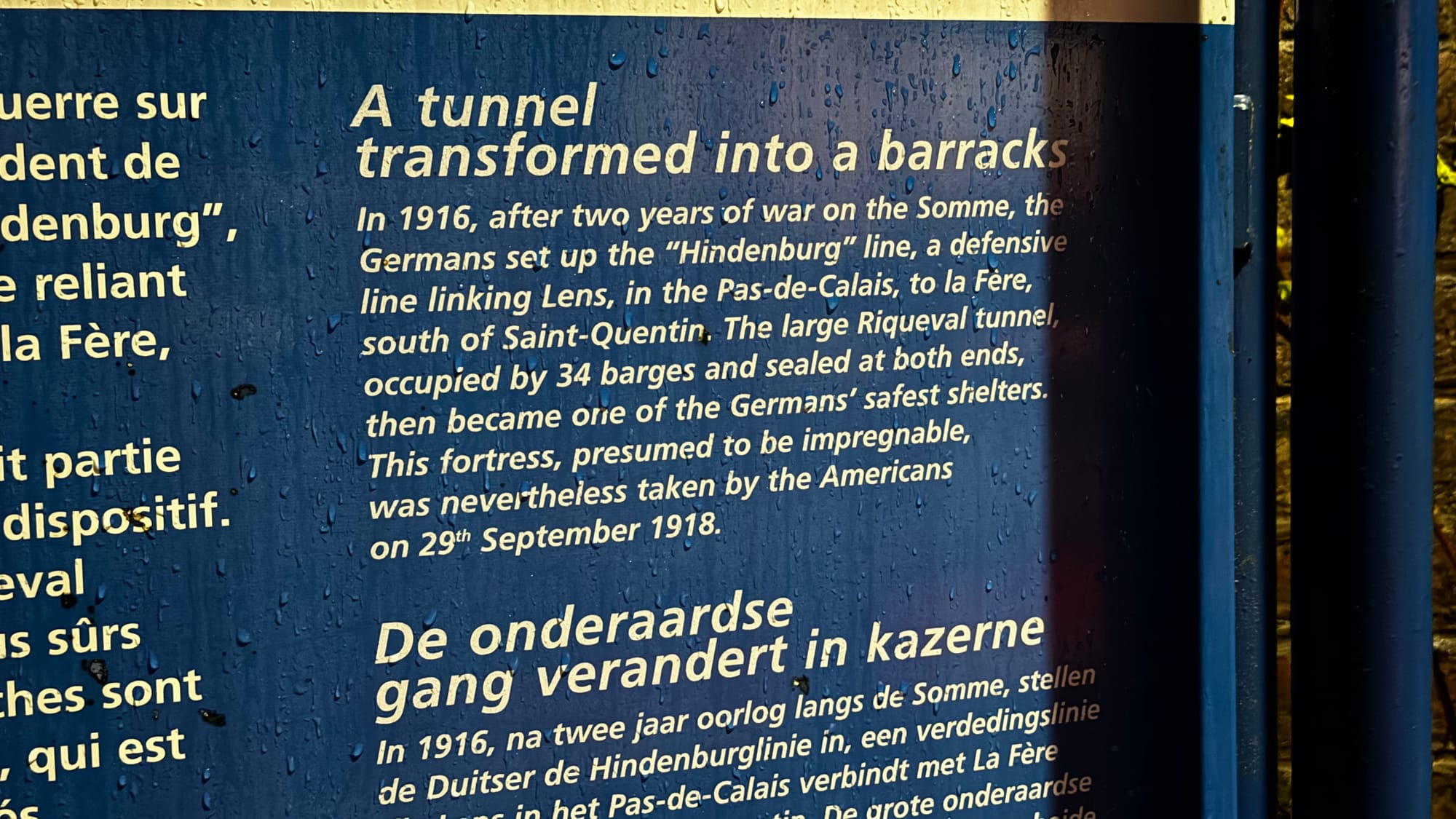
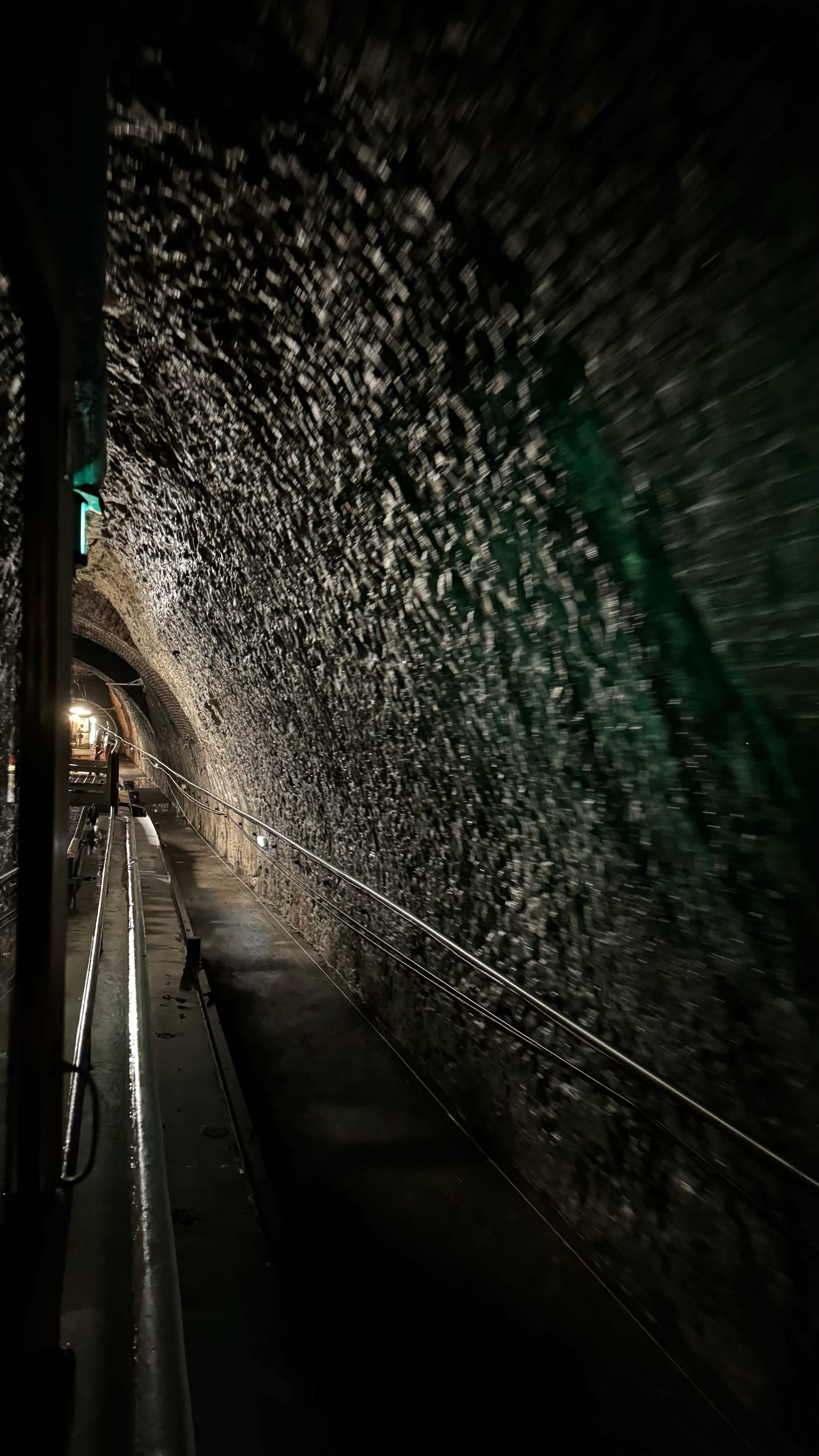
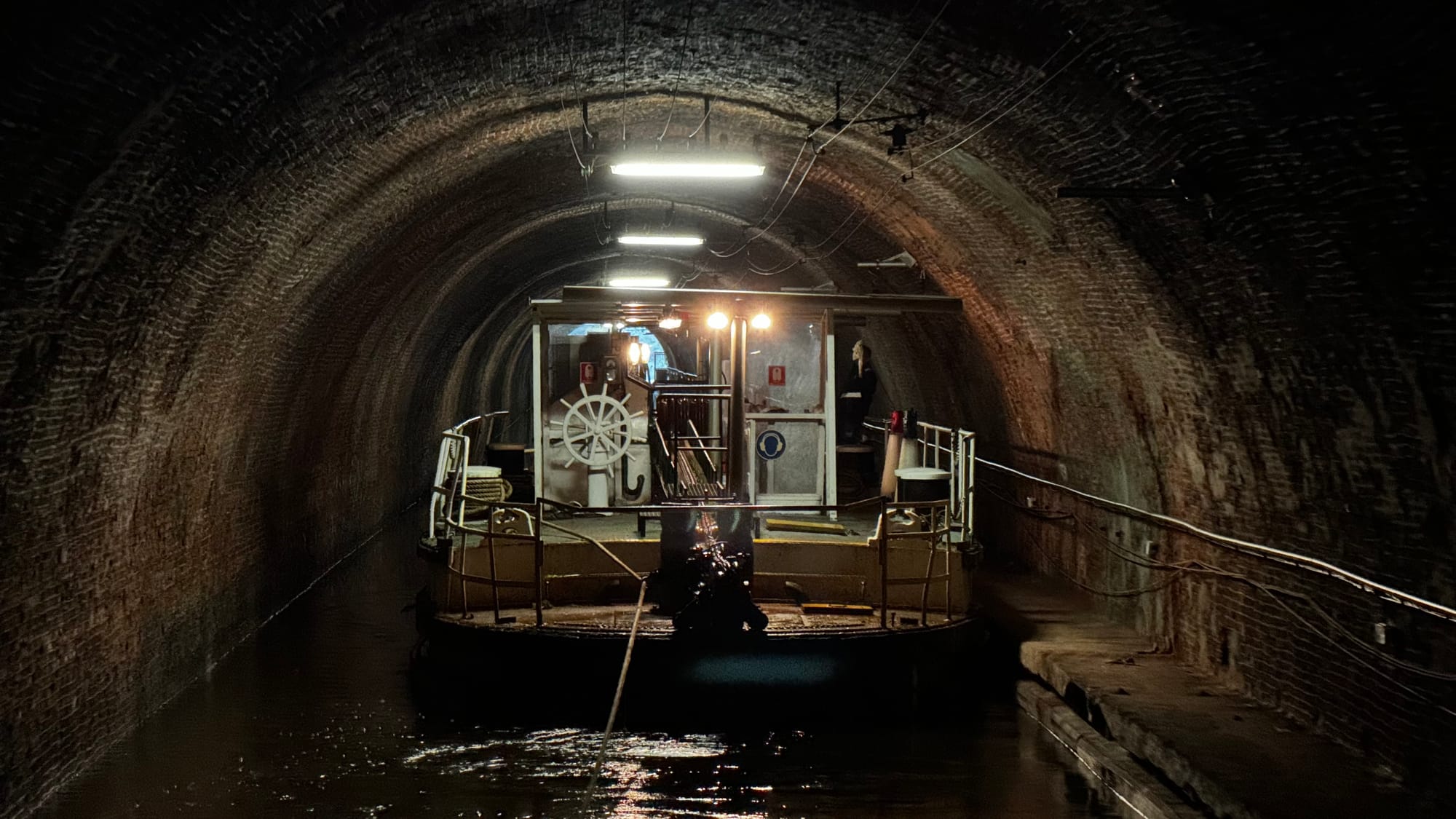
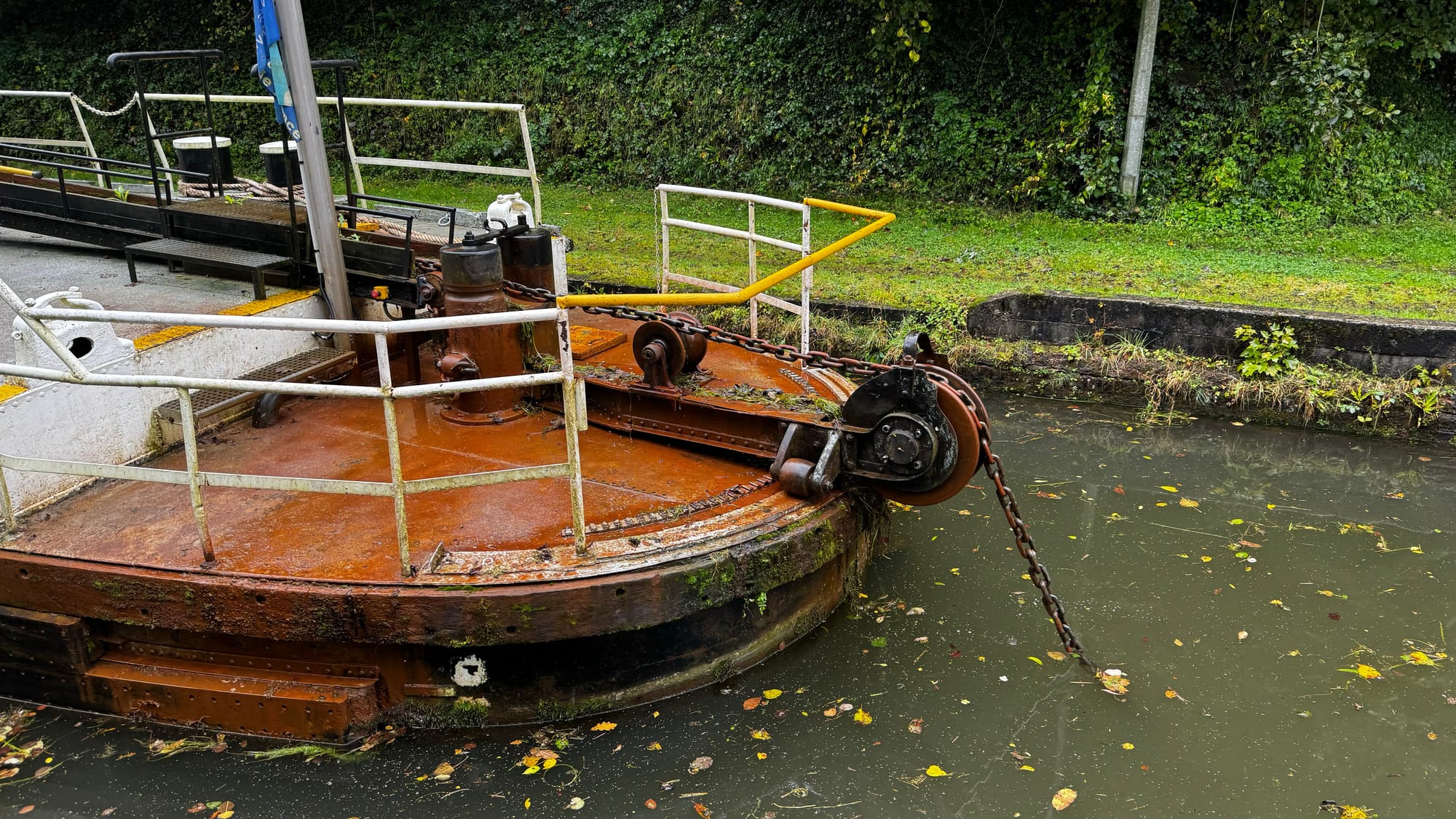
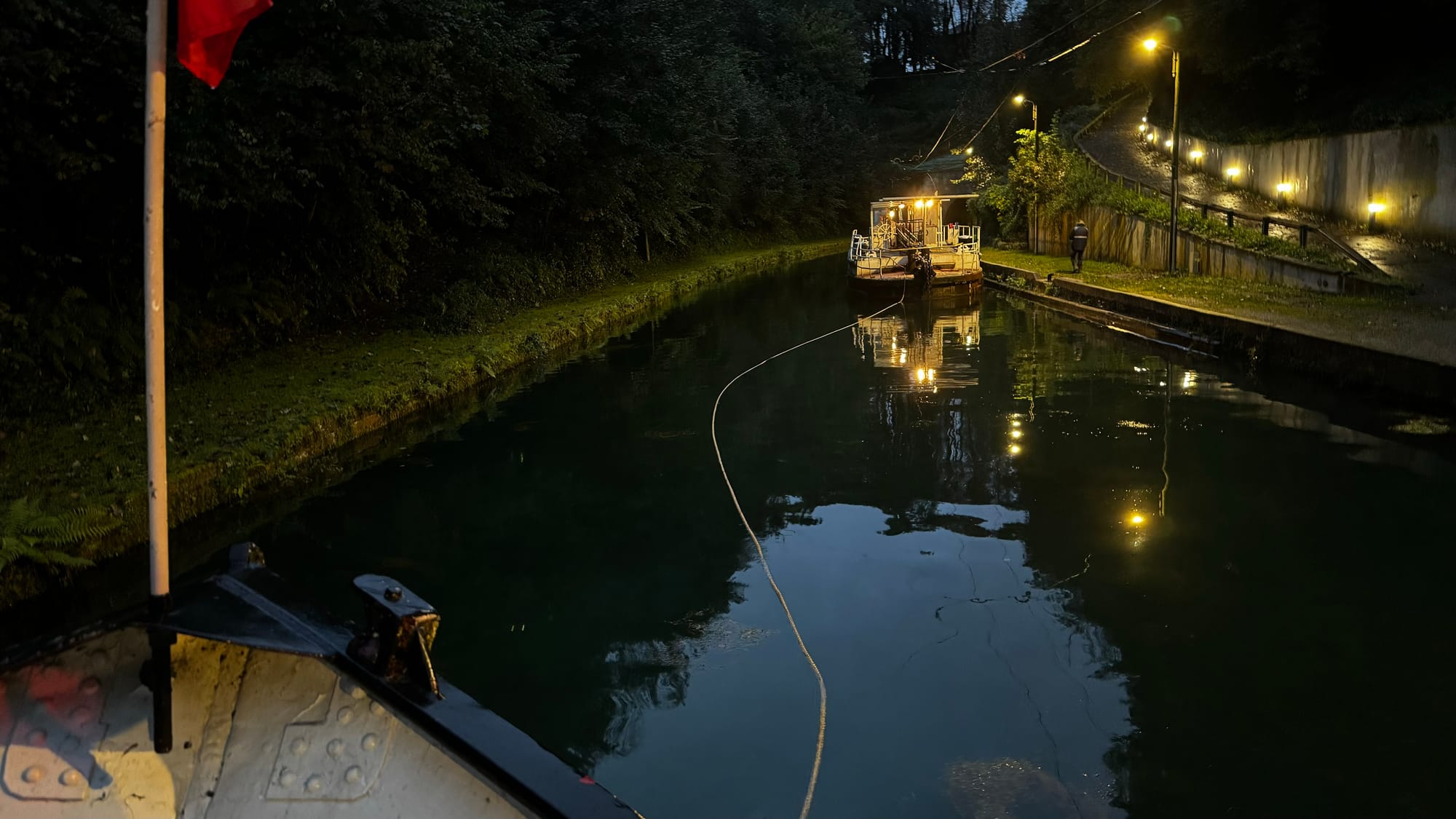
The Riqueval Tunnel
One place we passed through was the Riqueval Tunnel. This was a key part of the German defensive Hindenburg Line and apparently was closed off and had 38 barges inside housing troops. I couldn't imagine living in the cold and dark like that.
Aside from it's war history, the Riqueval Tunnel was a fascinating part of the journey. It was ordered to be built by Napoleon, and at 5.6km long, was the longest tunnel in the world for several years. Initially, boats were towed through by men, but once engines came on the scene, they powered through themselves. Unfortunately, lots of people became ill because the tunnel was very poorly ventilated, so they built an electric chain tow boat!
We had to be up at 7 am to be towed through the canal at 7.30 am. We were instructed to move up alongside a boat on the canal's edge, and a line was passed to us from the chain tug in front. Then, we were dragged along. The boat behind us passed us their lines, and Clair de Lune was in the middle!
Like the other tunnels we've encountered, the first ten minutes are exciting enough, but after that, it's boring. We had our engines off most of the way and didn't need to do anything as Clair was pulled along. It took around 90 minutes to get through the tunnel, and then we powered away down the hill, happy to get through and into a long series of descending locks. Fortunately, this set had an excellent remote control, which made things easier.
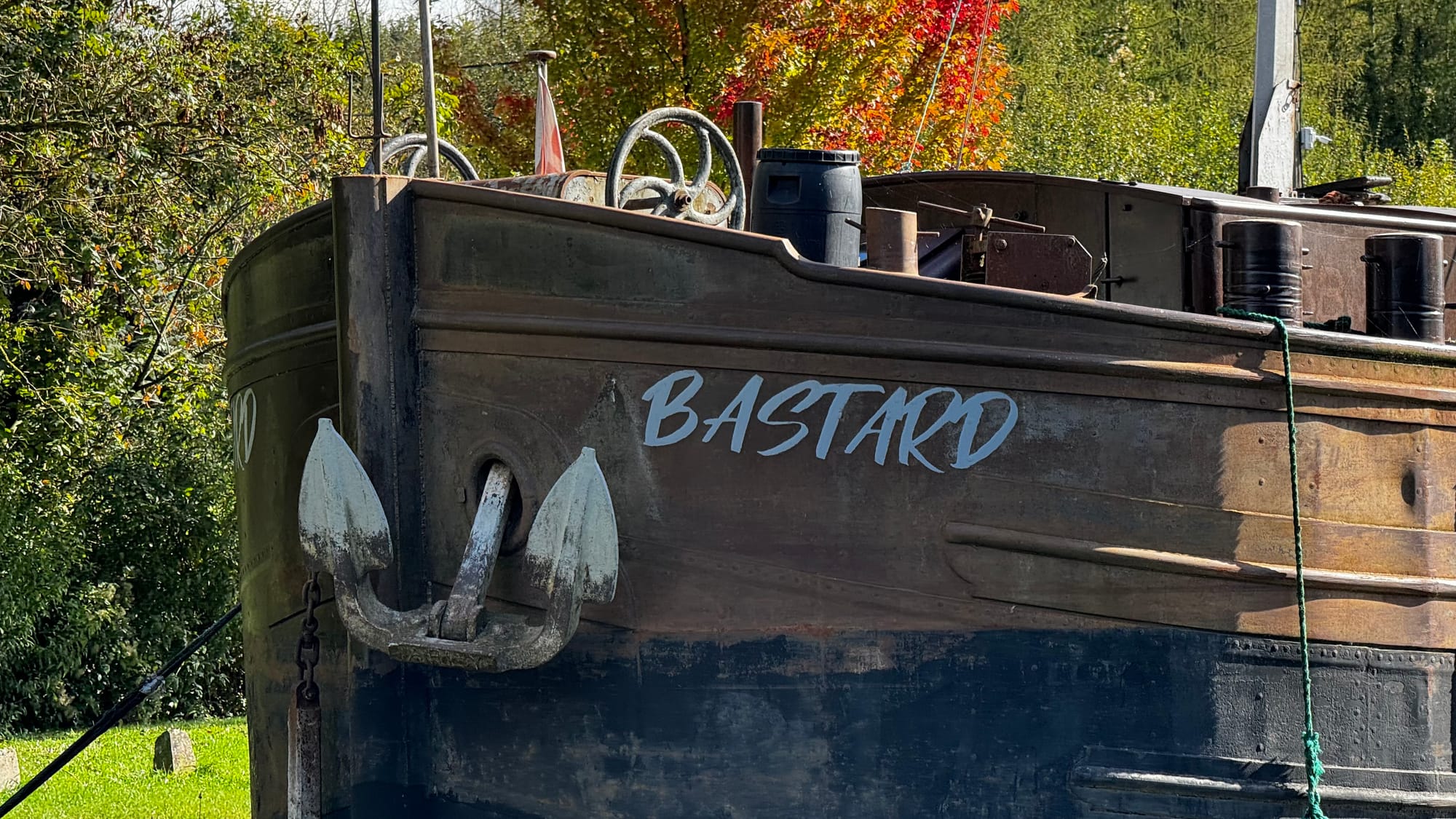

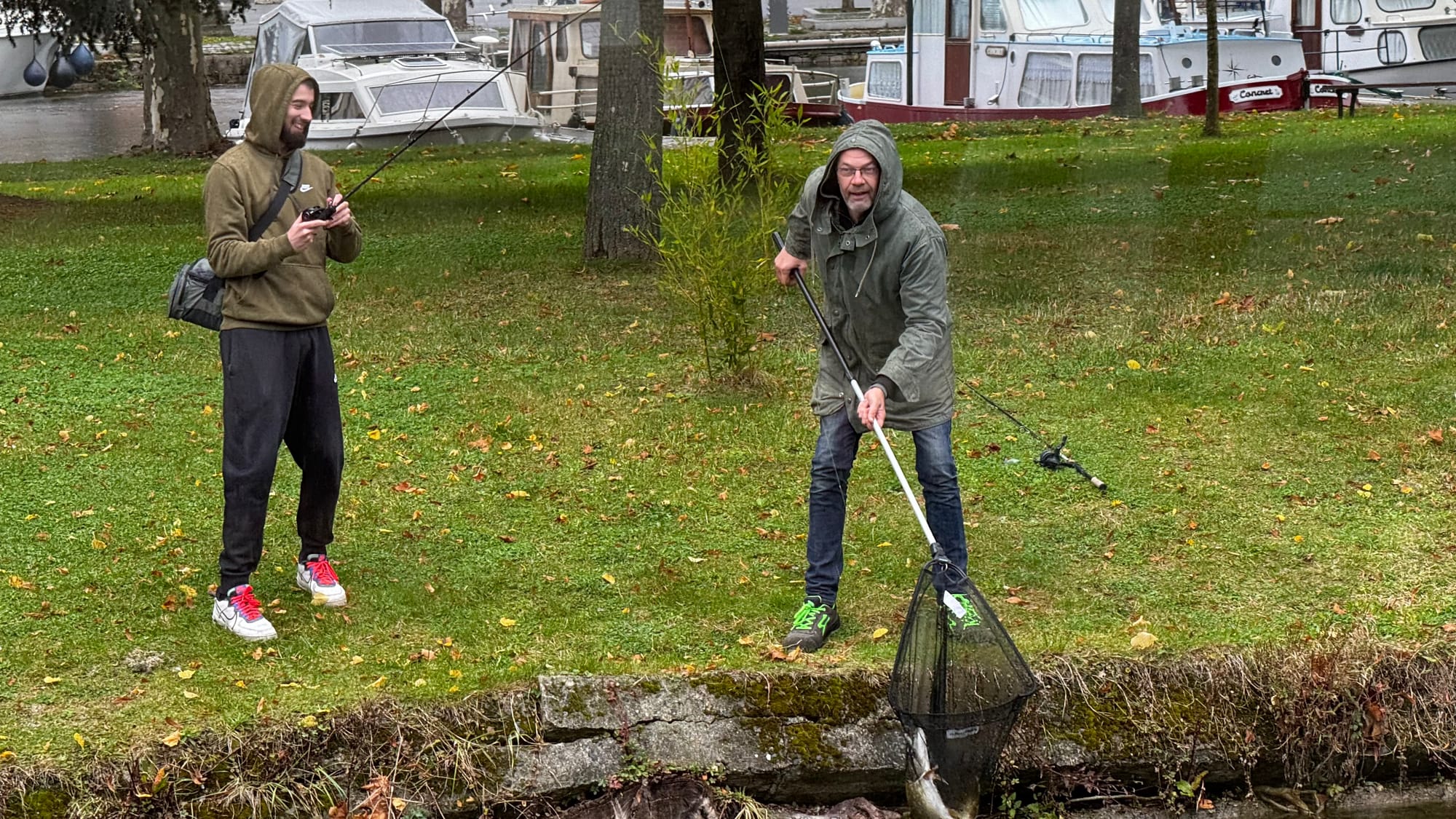
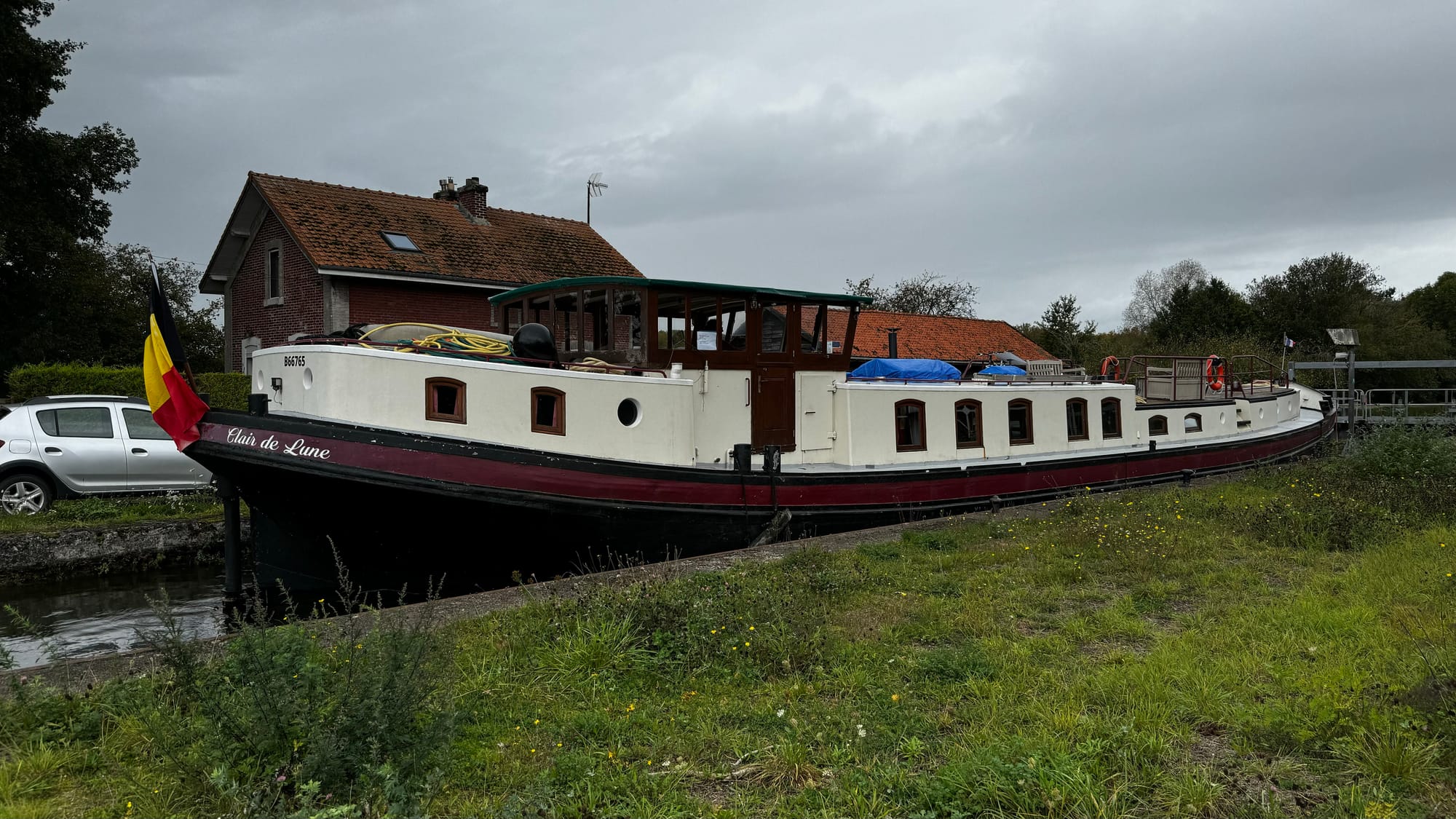
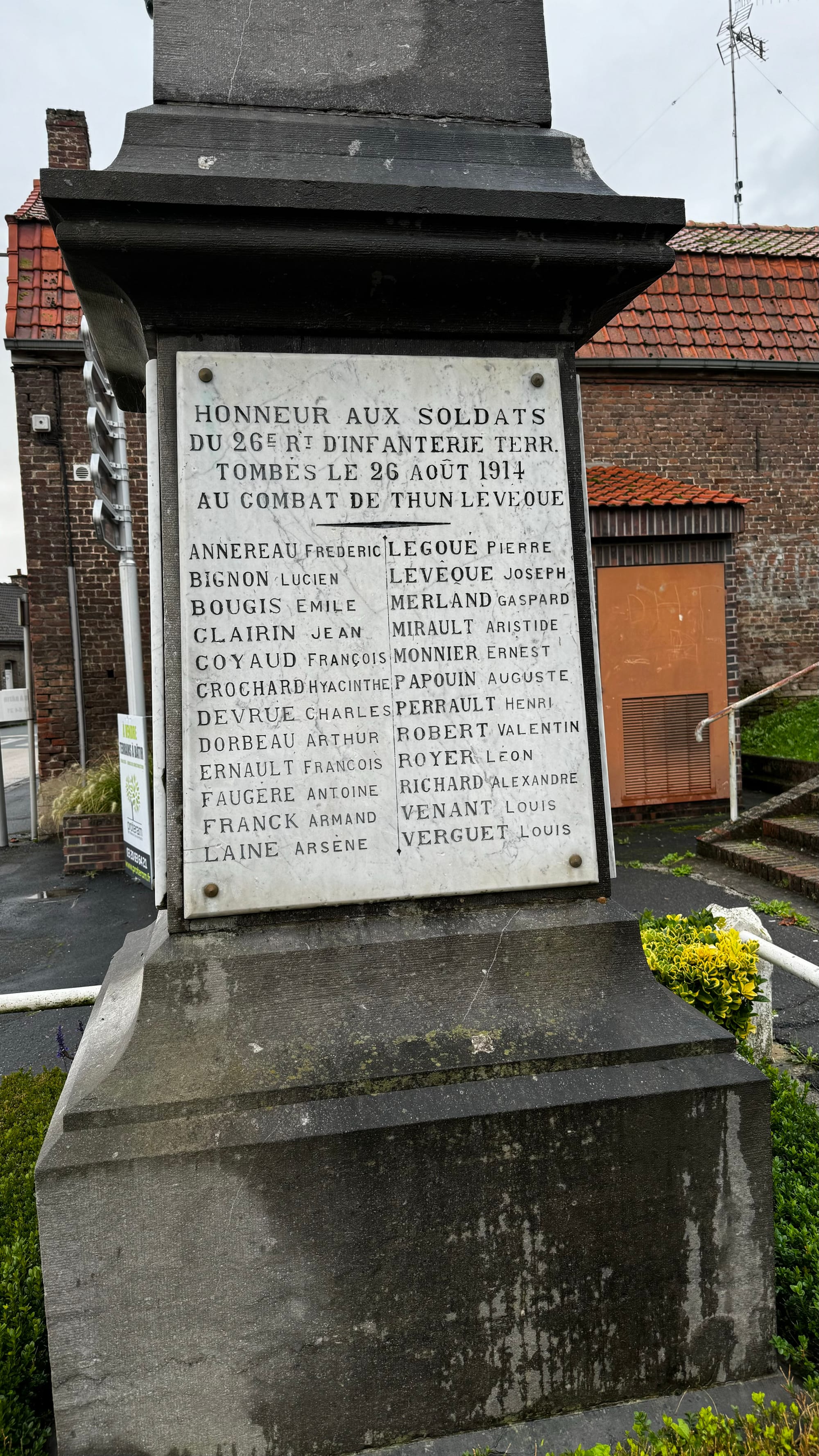
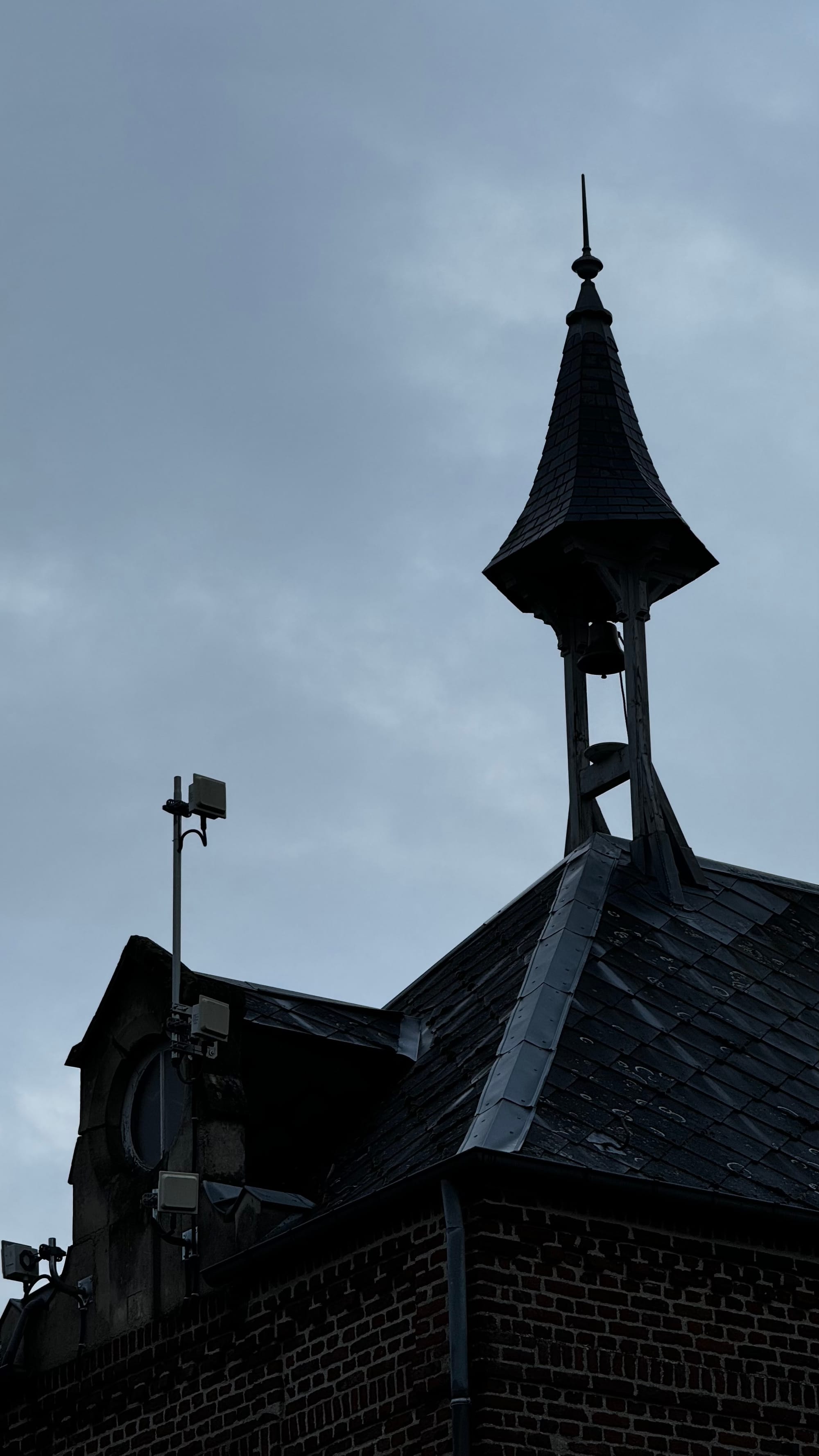
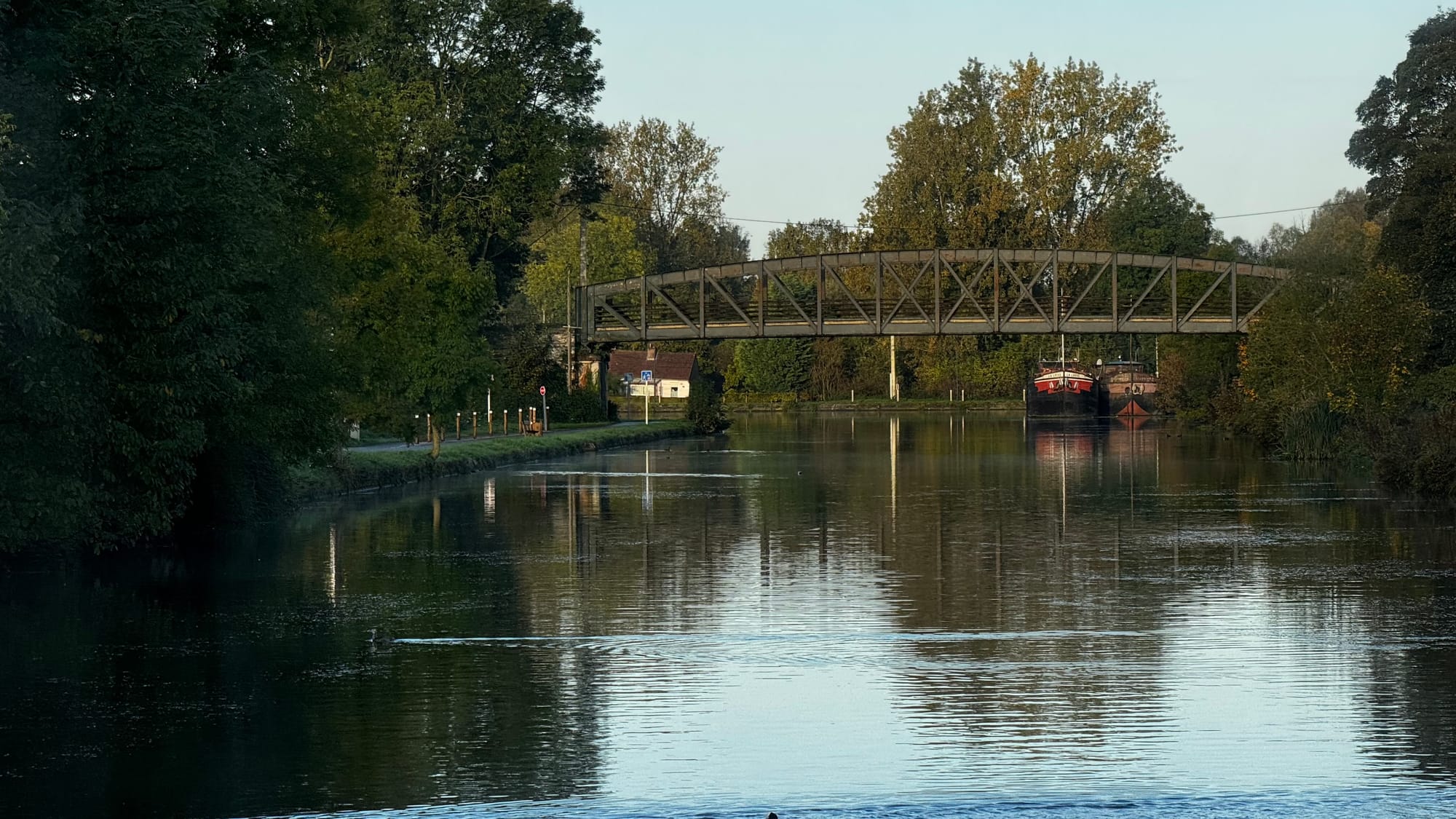
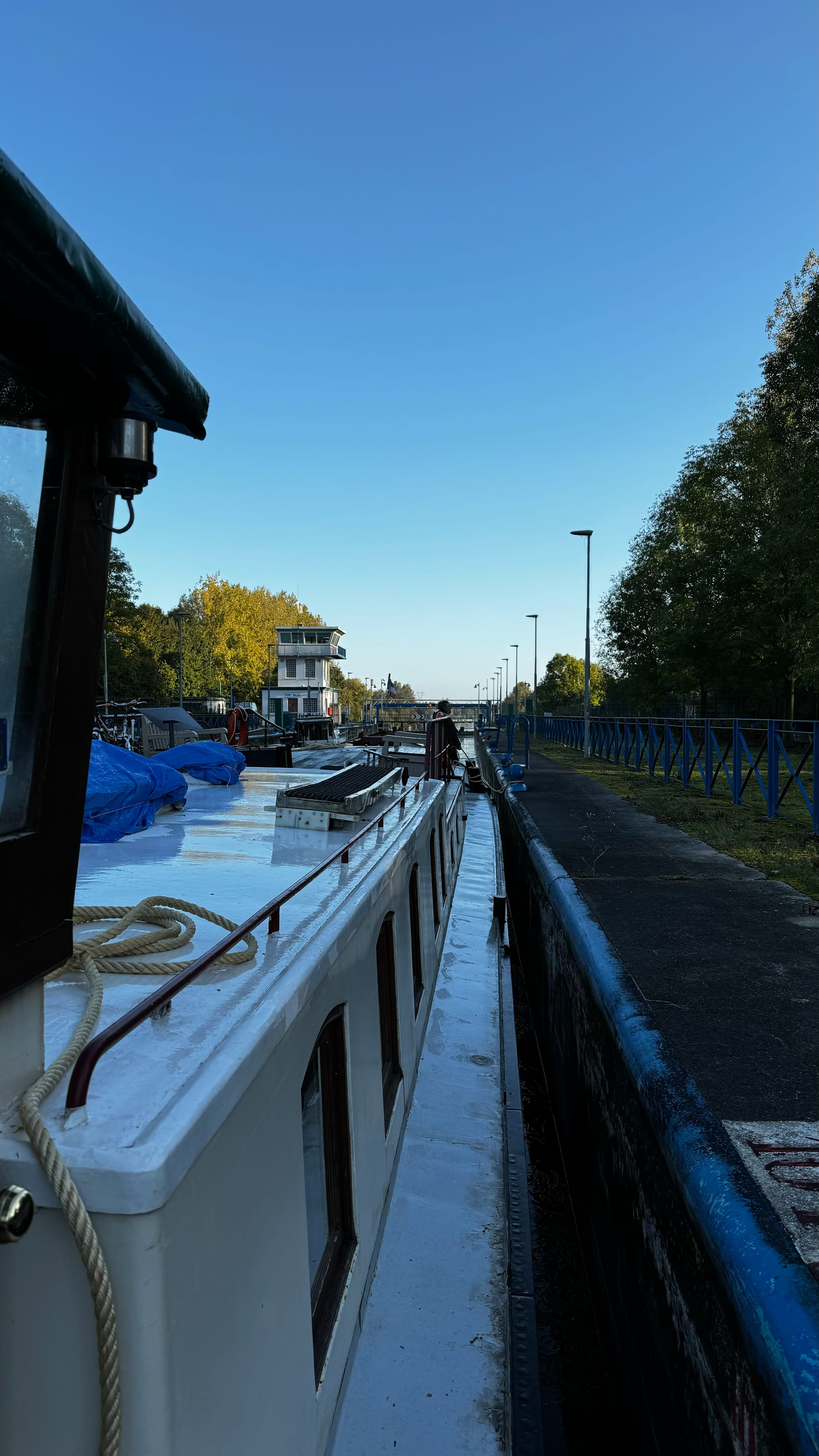
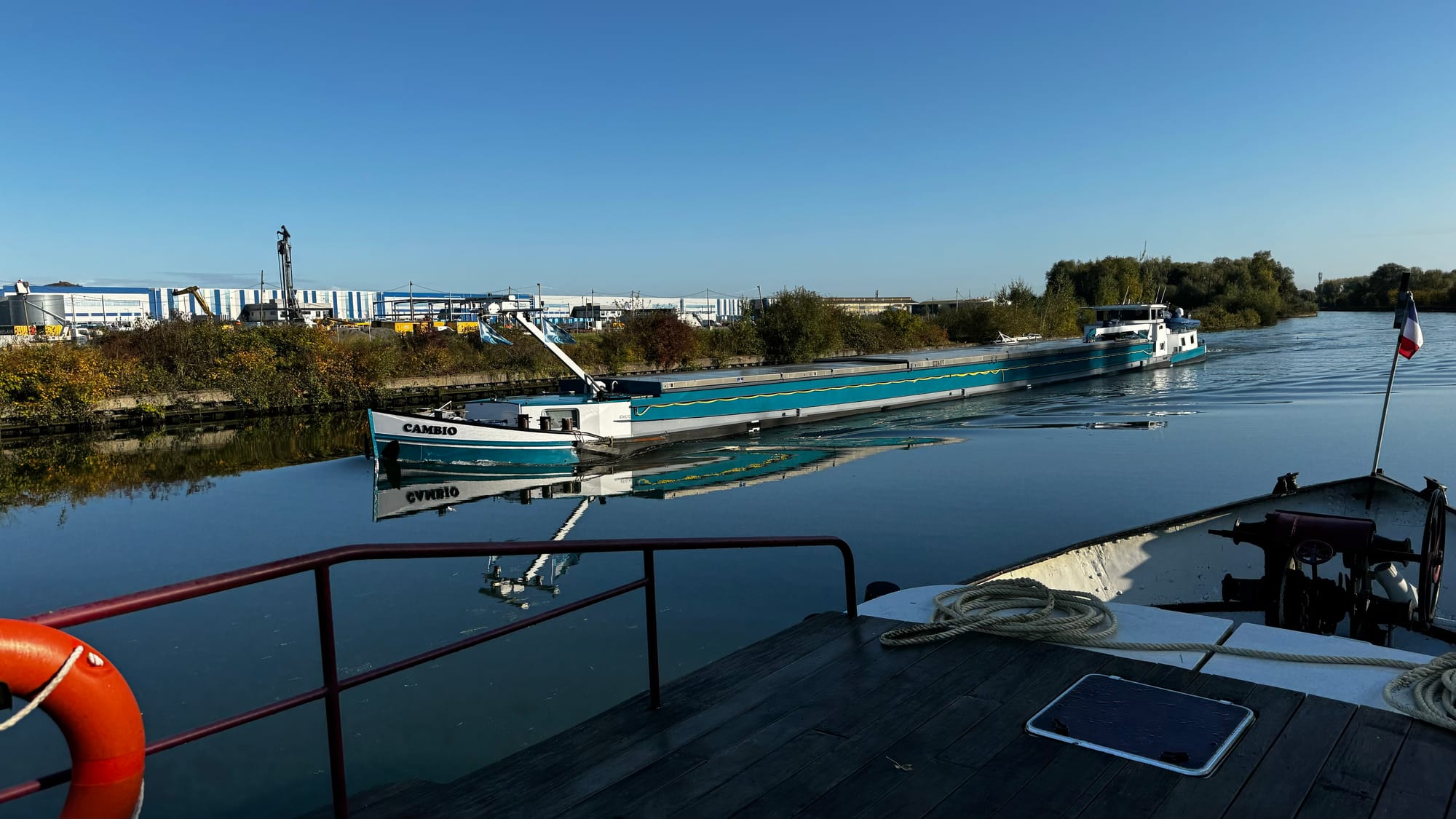
One thing you see along here is not just memorials to the fallen from a specific village (like you might in the UK or Australia), but memorials to everyone who died liberating the village too.
Before we knew it, we were out on to the Escault Canal, which is a major commercial one. We were no longer locking by ourselves but with other boats. The locks were up to 160 meters long and manned, so we just tied up, waited and then away we went. The big canals are good because we move so much faster – there's plenty of room to navigate, pass other boats and you don't have to slow for the bends at all (on the small canals, you would have to slow right down to navigate turns).
We kept trying to estimate how far there was to go, and unlike at the beginning of the trip, where we were overestimating our speed, this time, we continually underestimated it! Destinations we thought might take two days would pass in only one. We blew past milestone after milestone until finally, on Friday night, we stopped about 250 meters south of the Belgian border to enjoy our last night in France.
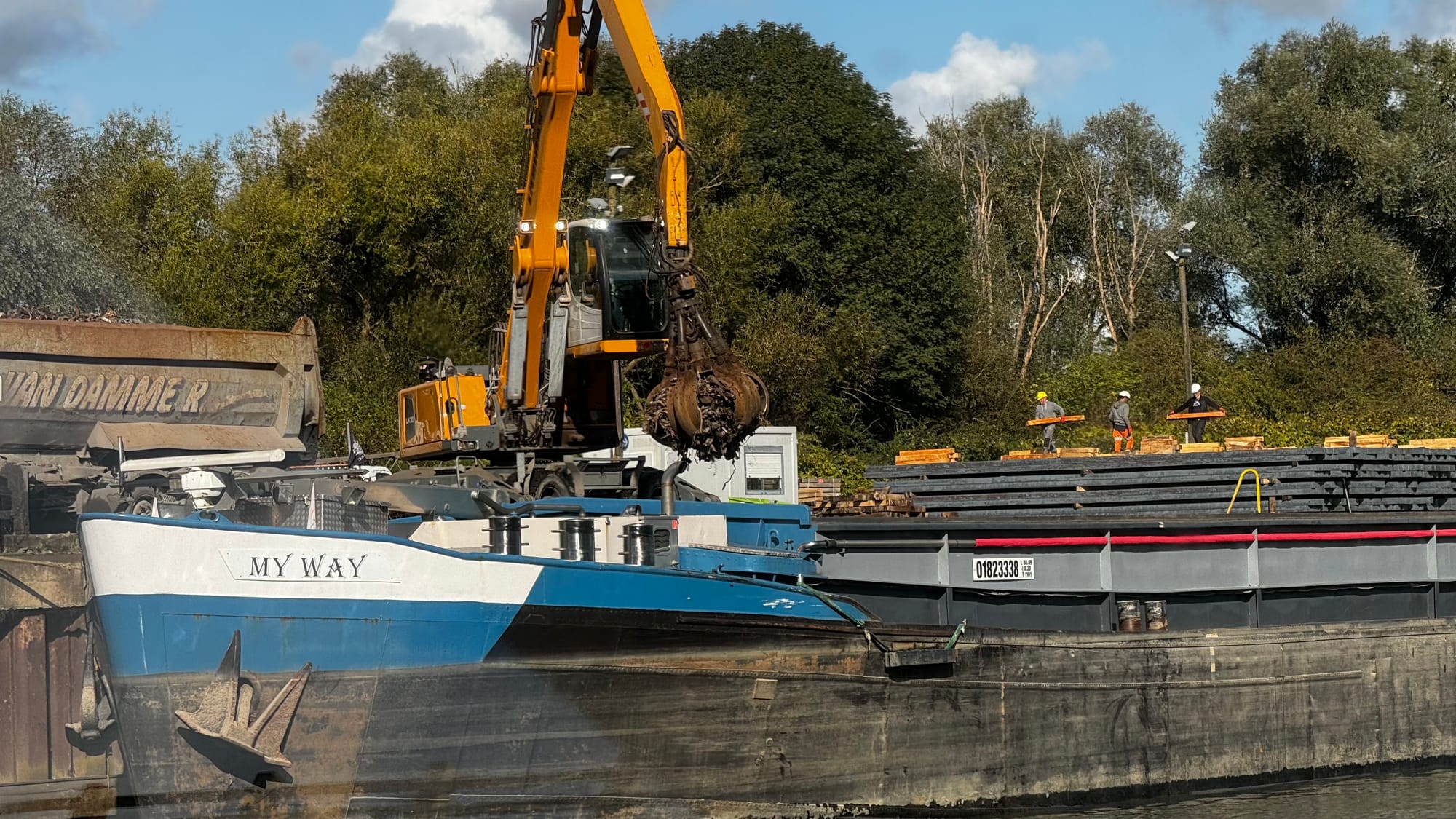
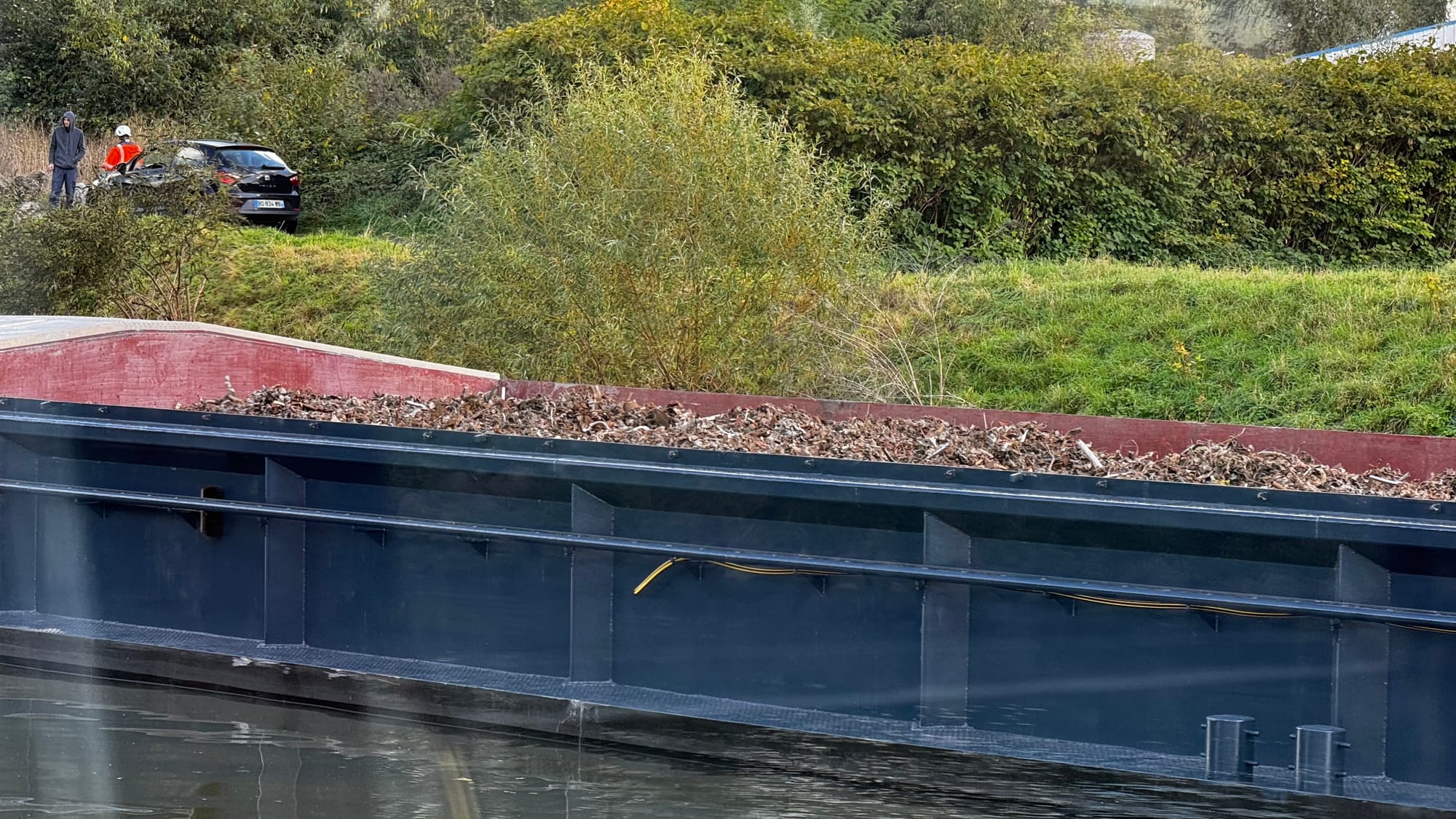
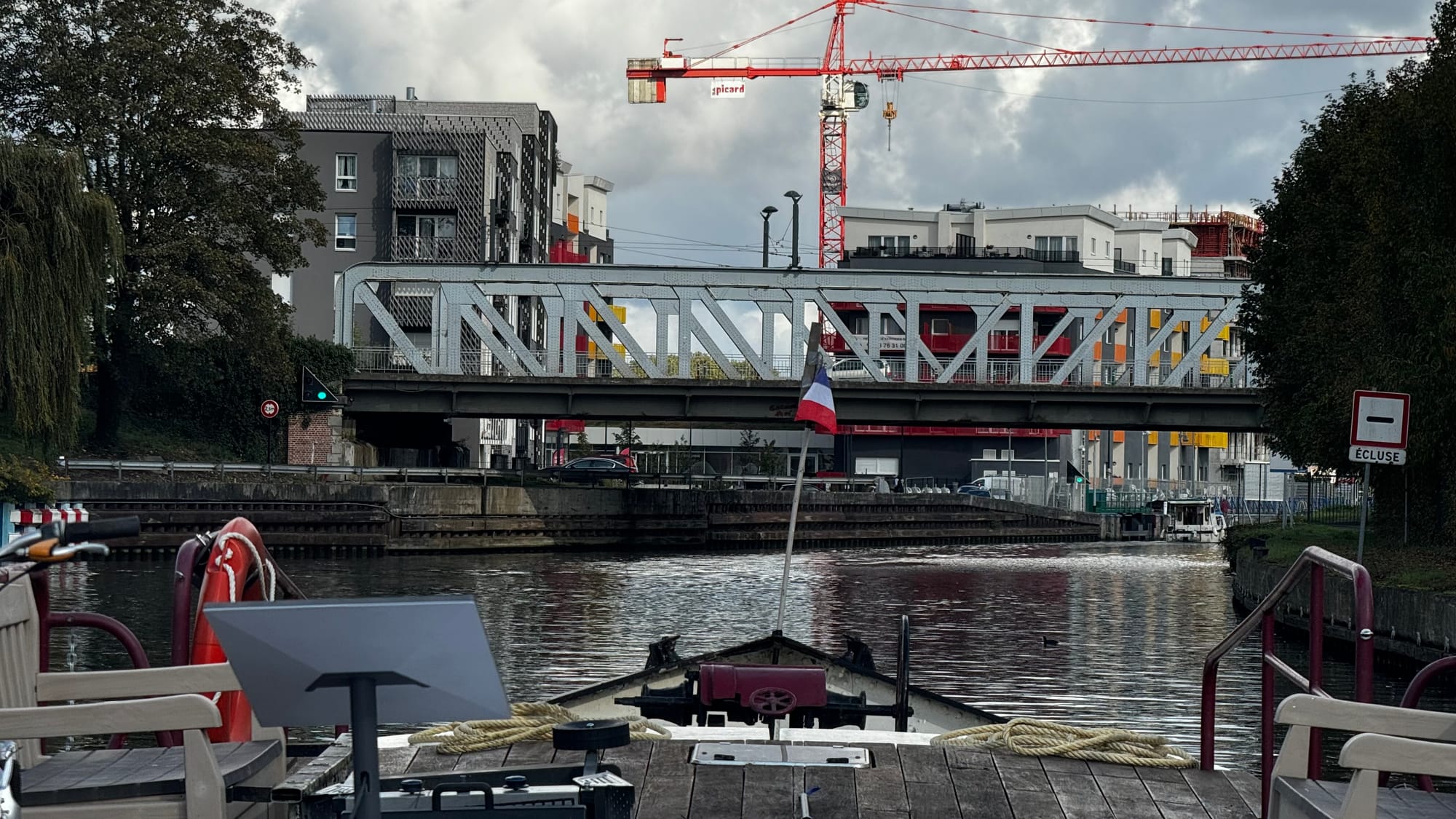
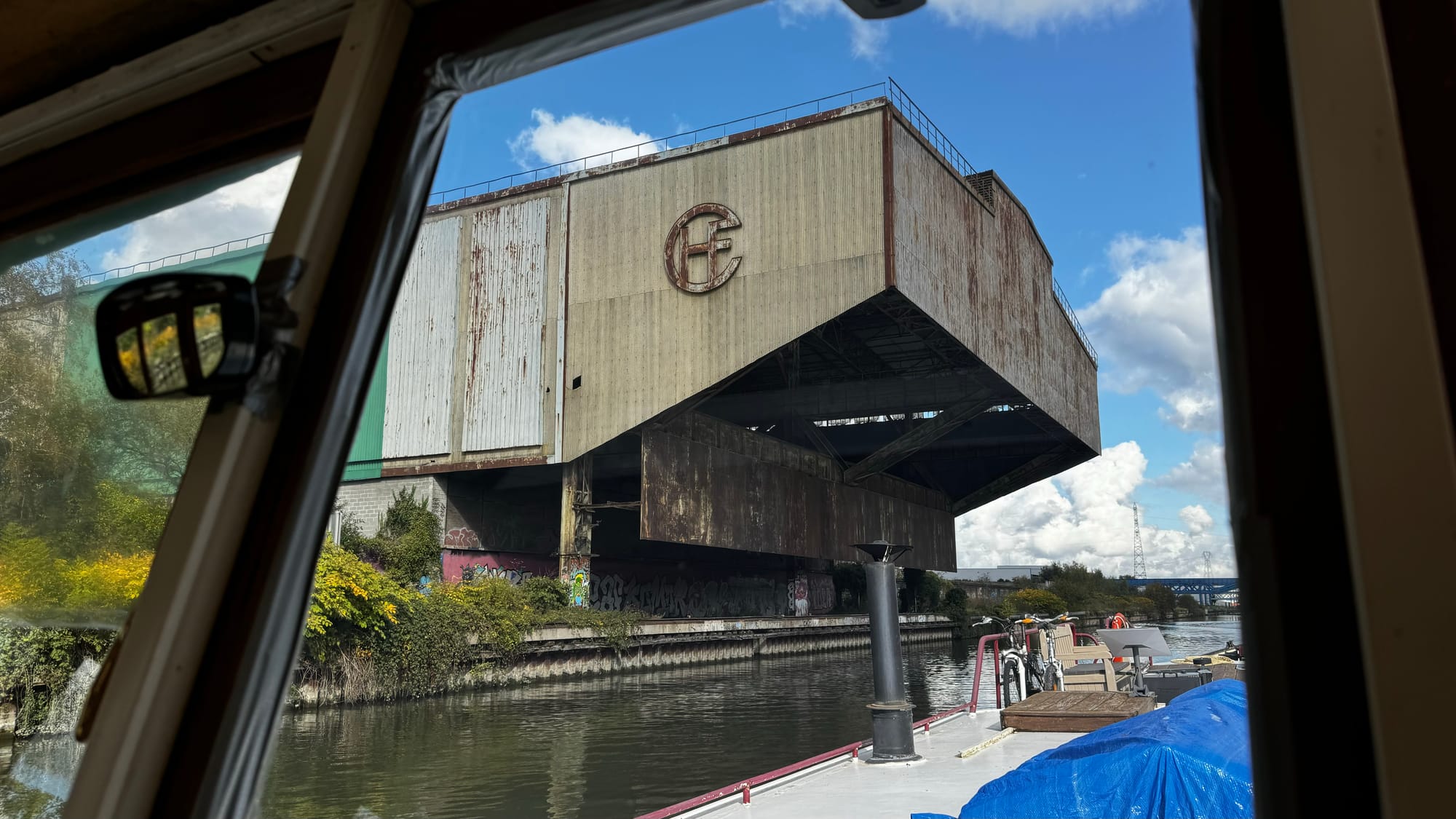
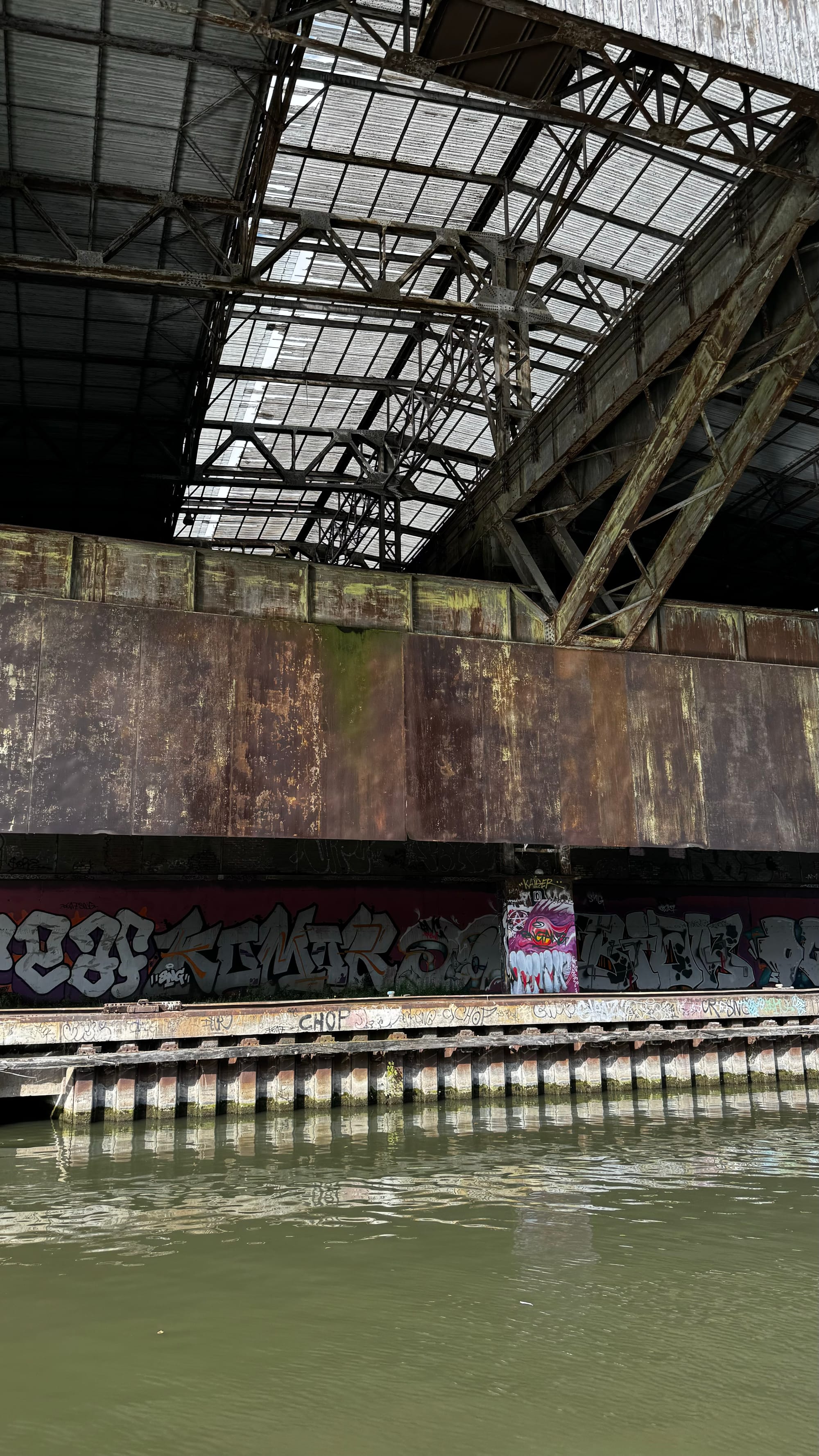
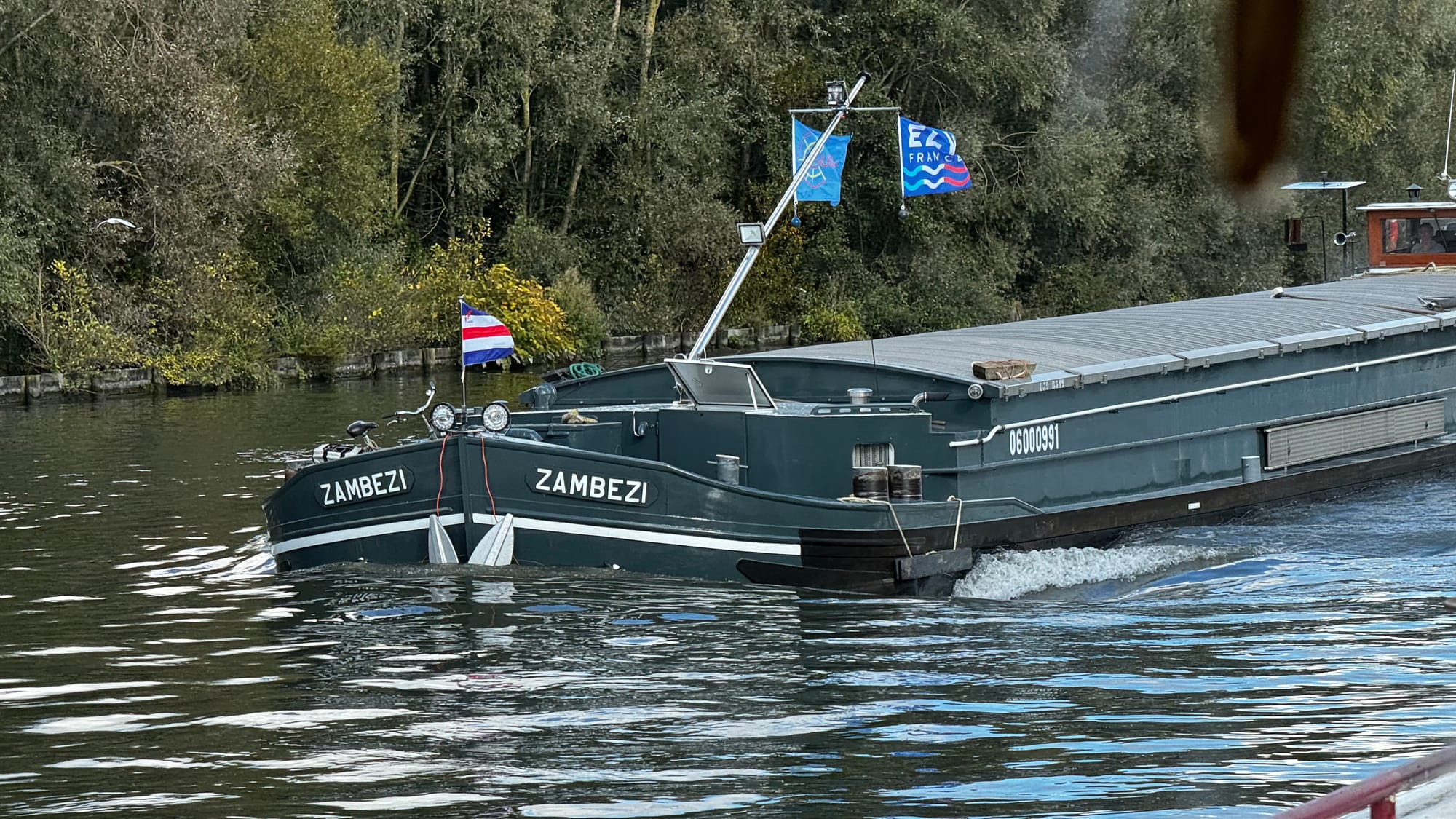
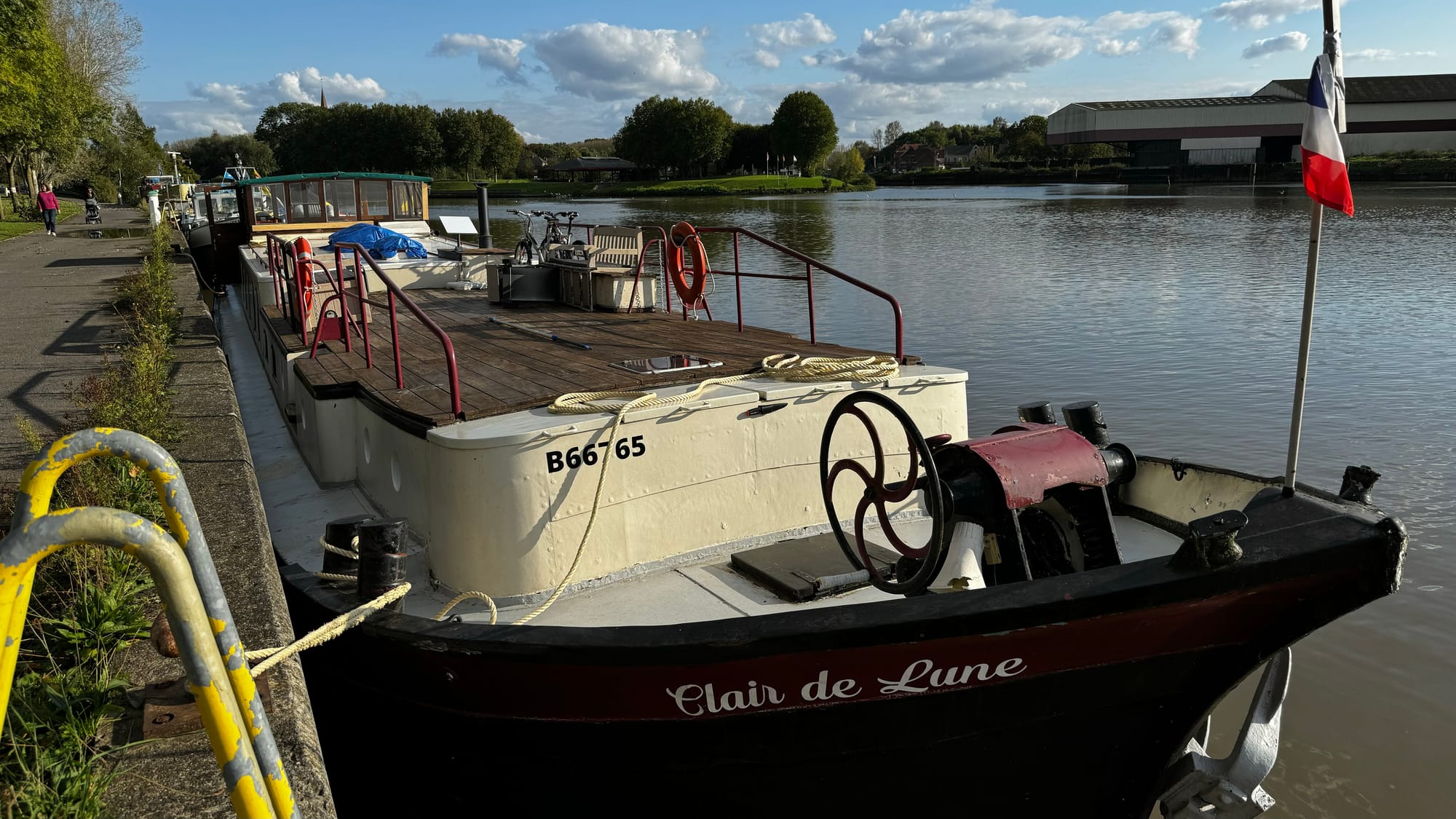
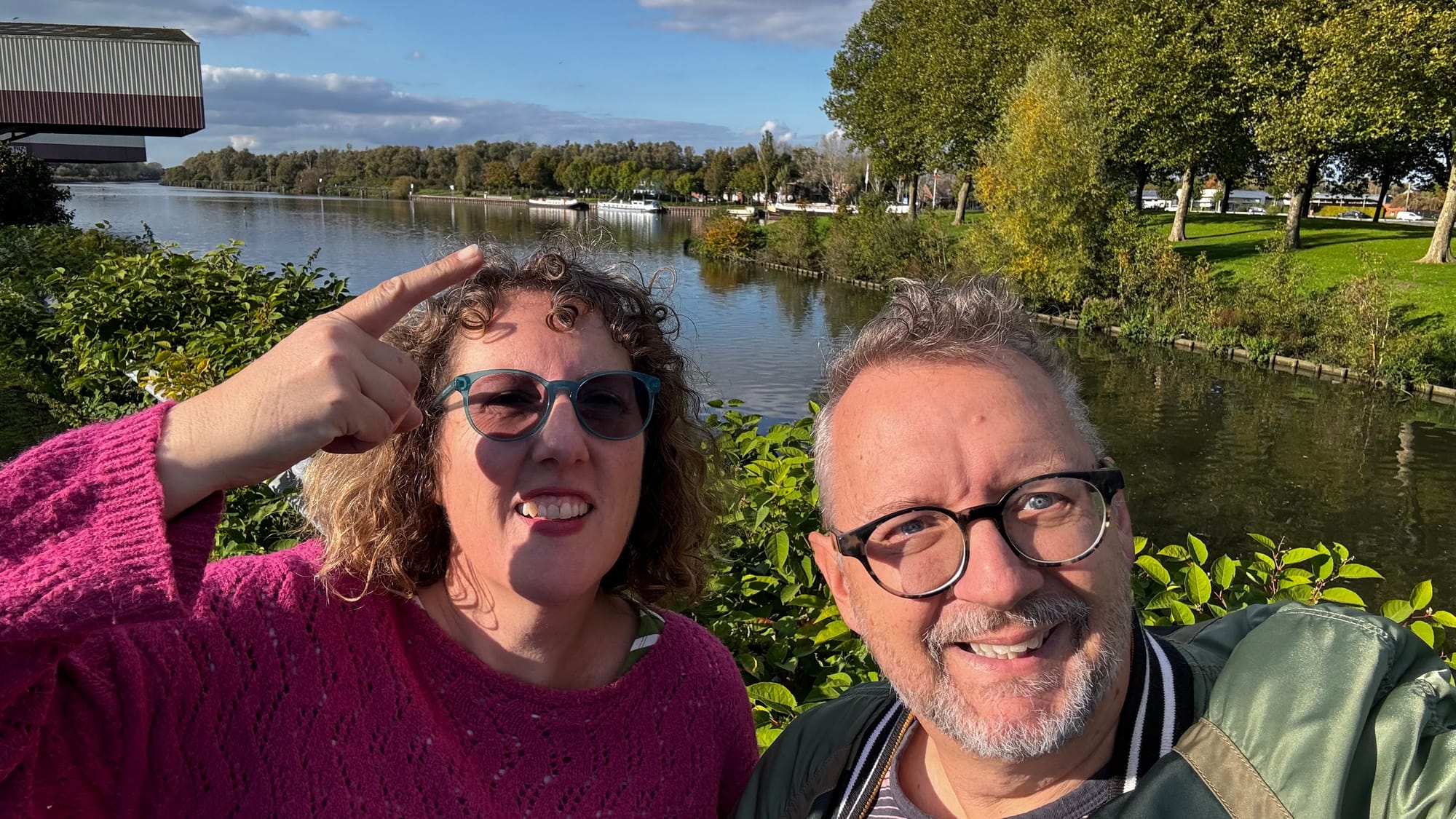
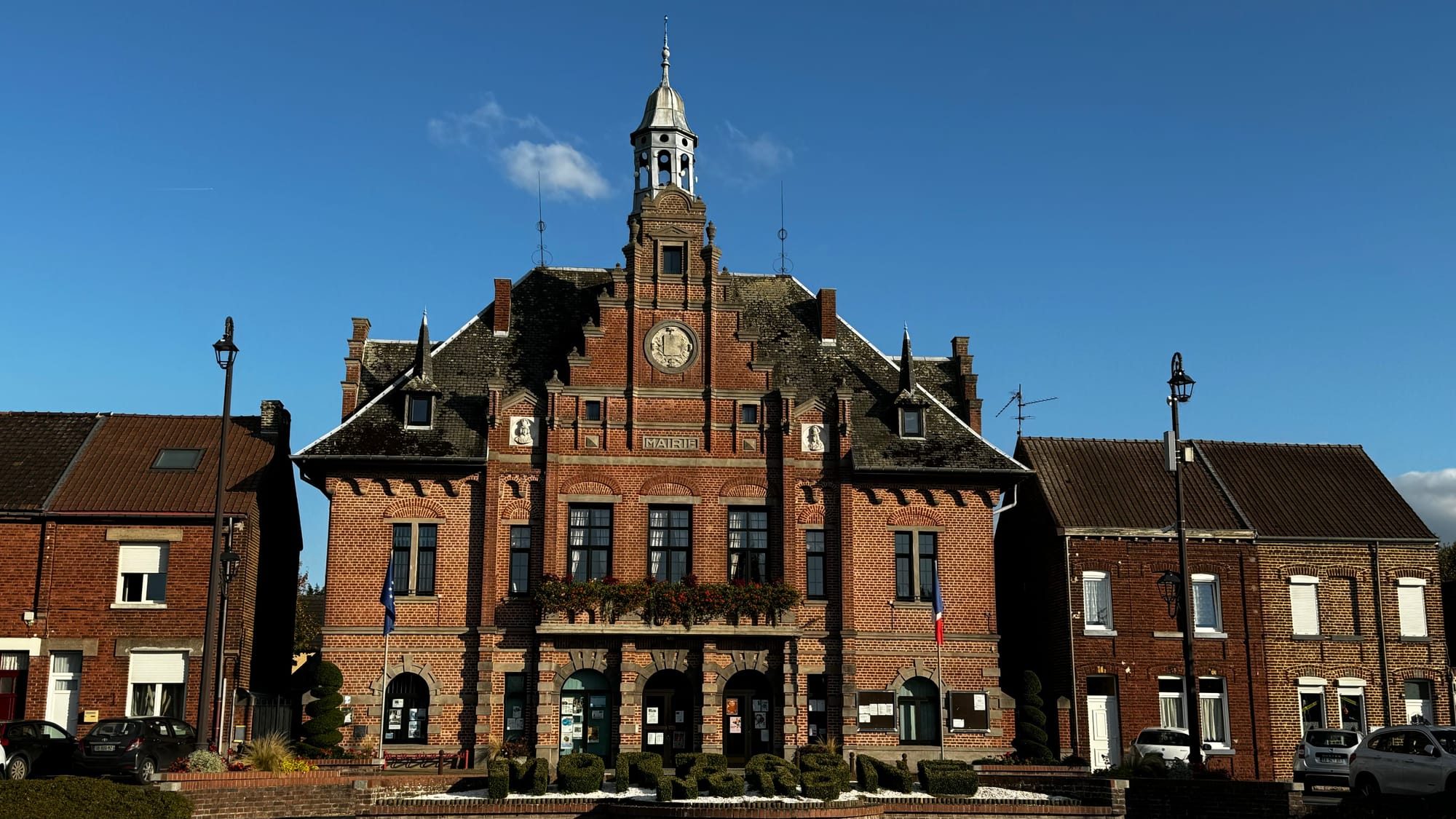
Lots of industry. Excited to finally be at the top of France.
Saturday, we headed off, and before we knew it, we were finally in Belgium! Now, the next phase of the adventure starts. We have a day left to get to Gent, so it will be a challenge to see where we put Clair de Lune while we sort out various services. We have a meeting with the architect next week to see the plans; we are talking to surveyors, and there's a rename to be done... And, of course, all the things we've neglected in Belgium with our residency are to be dealt with. Things will continue to be busy, but they will also change.
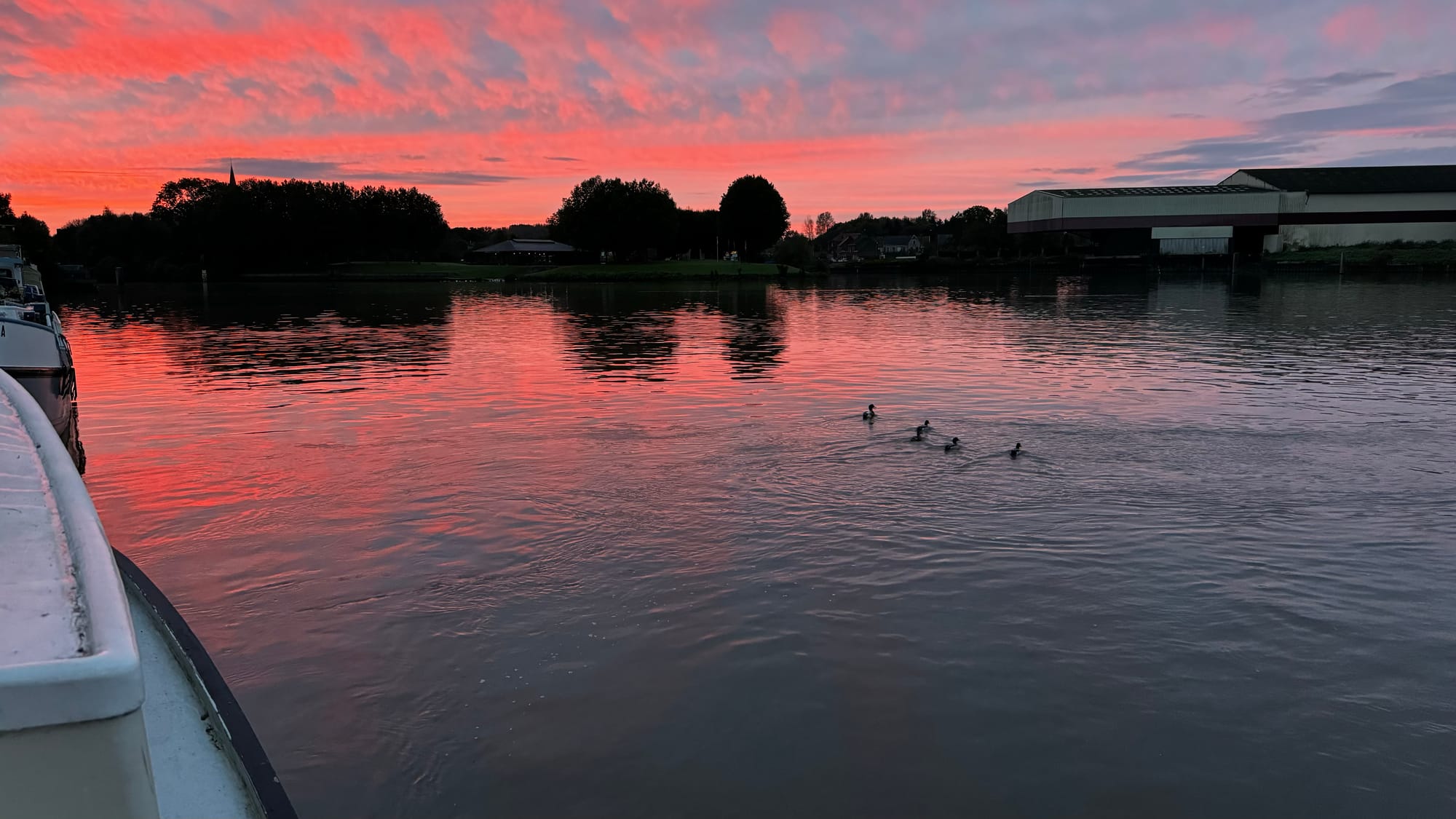
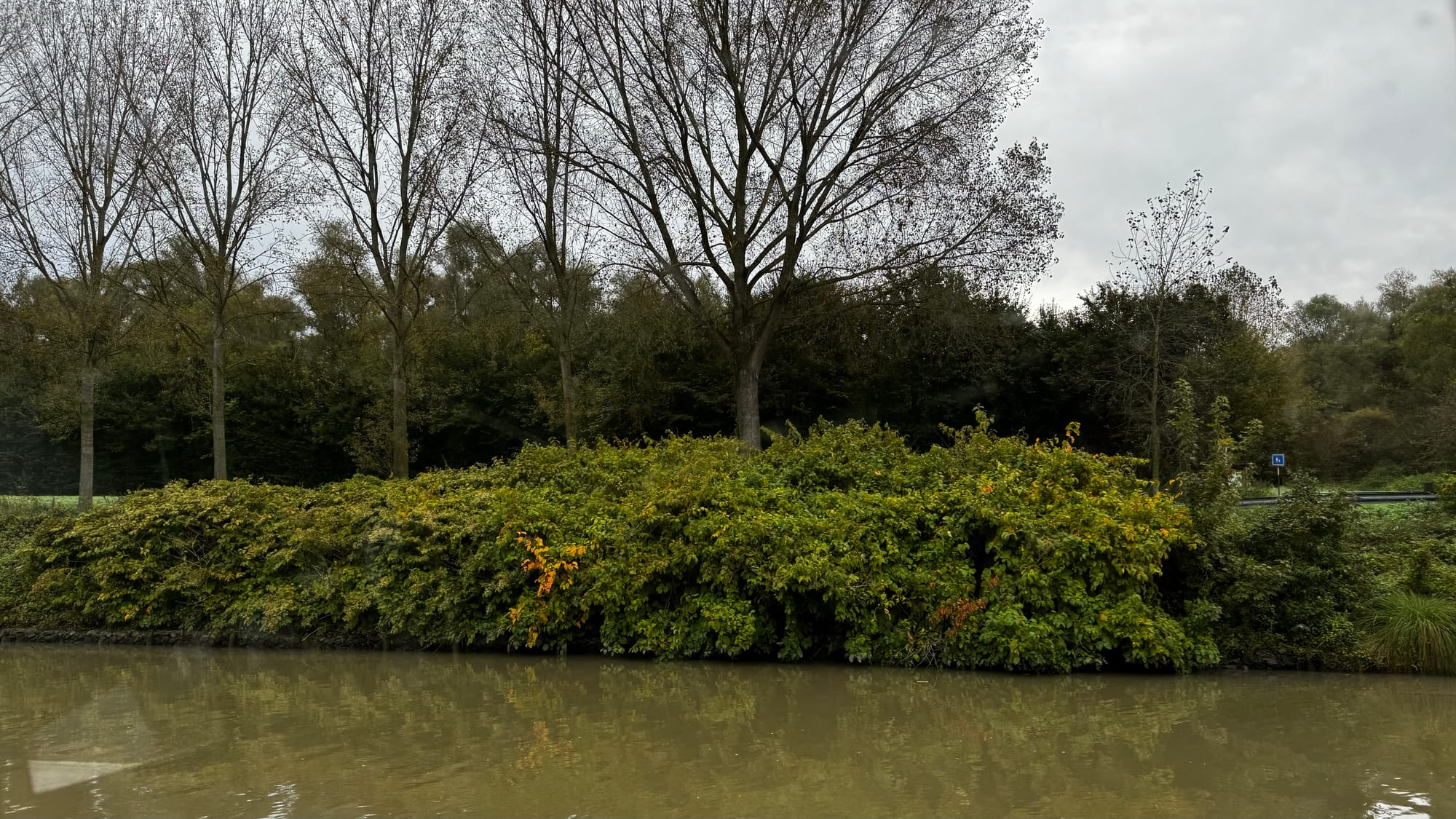
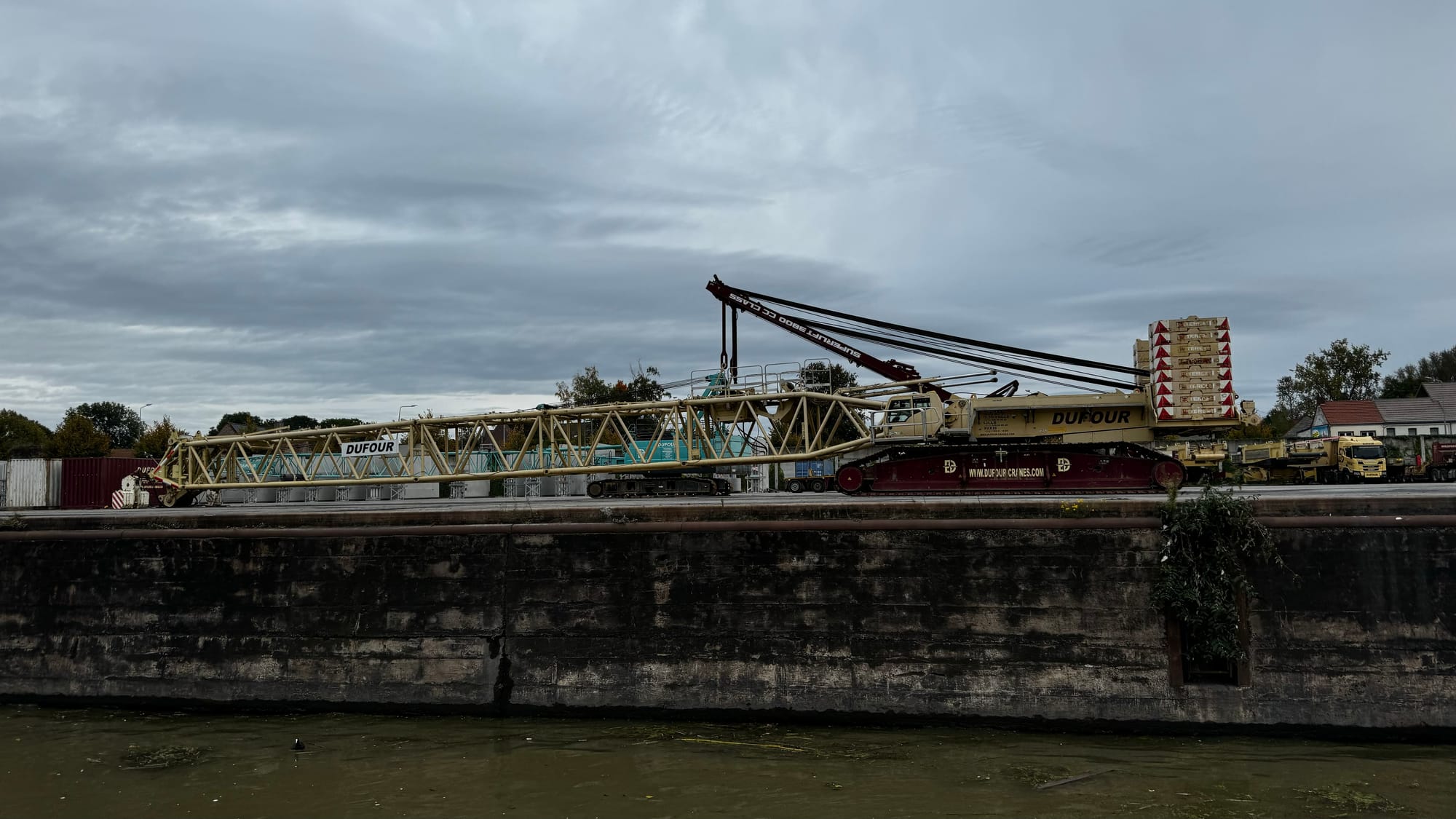
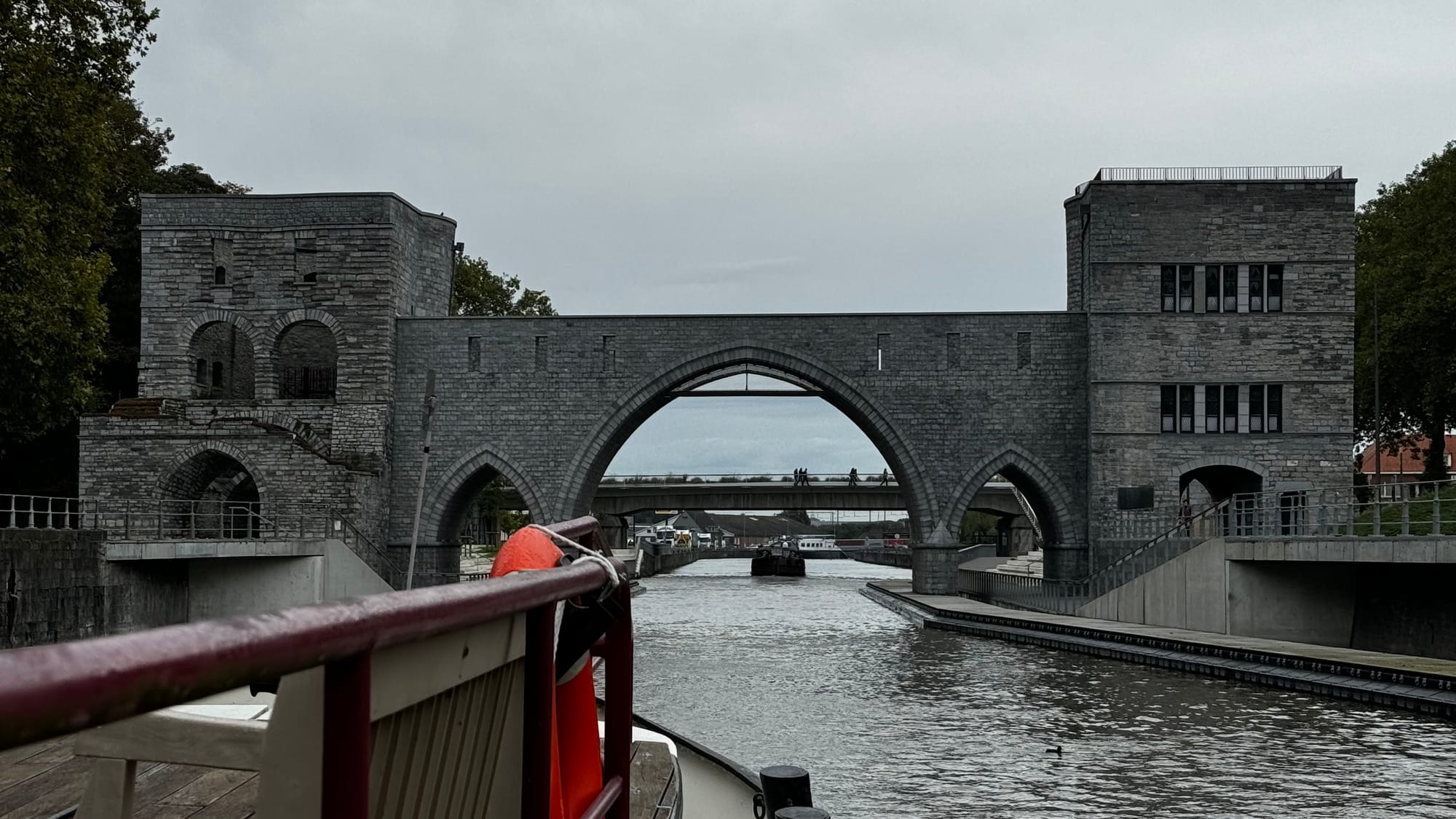
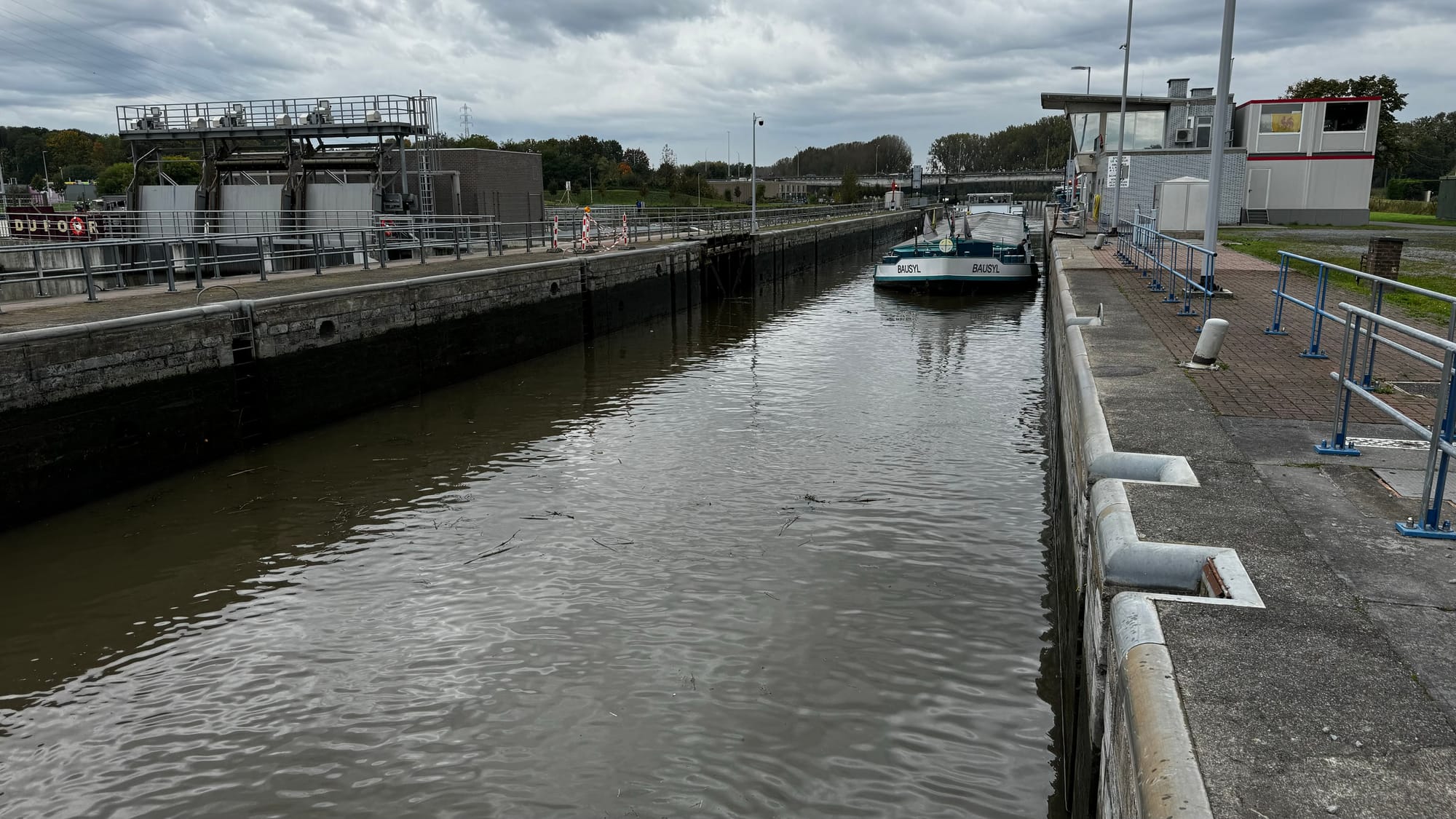
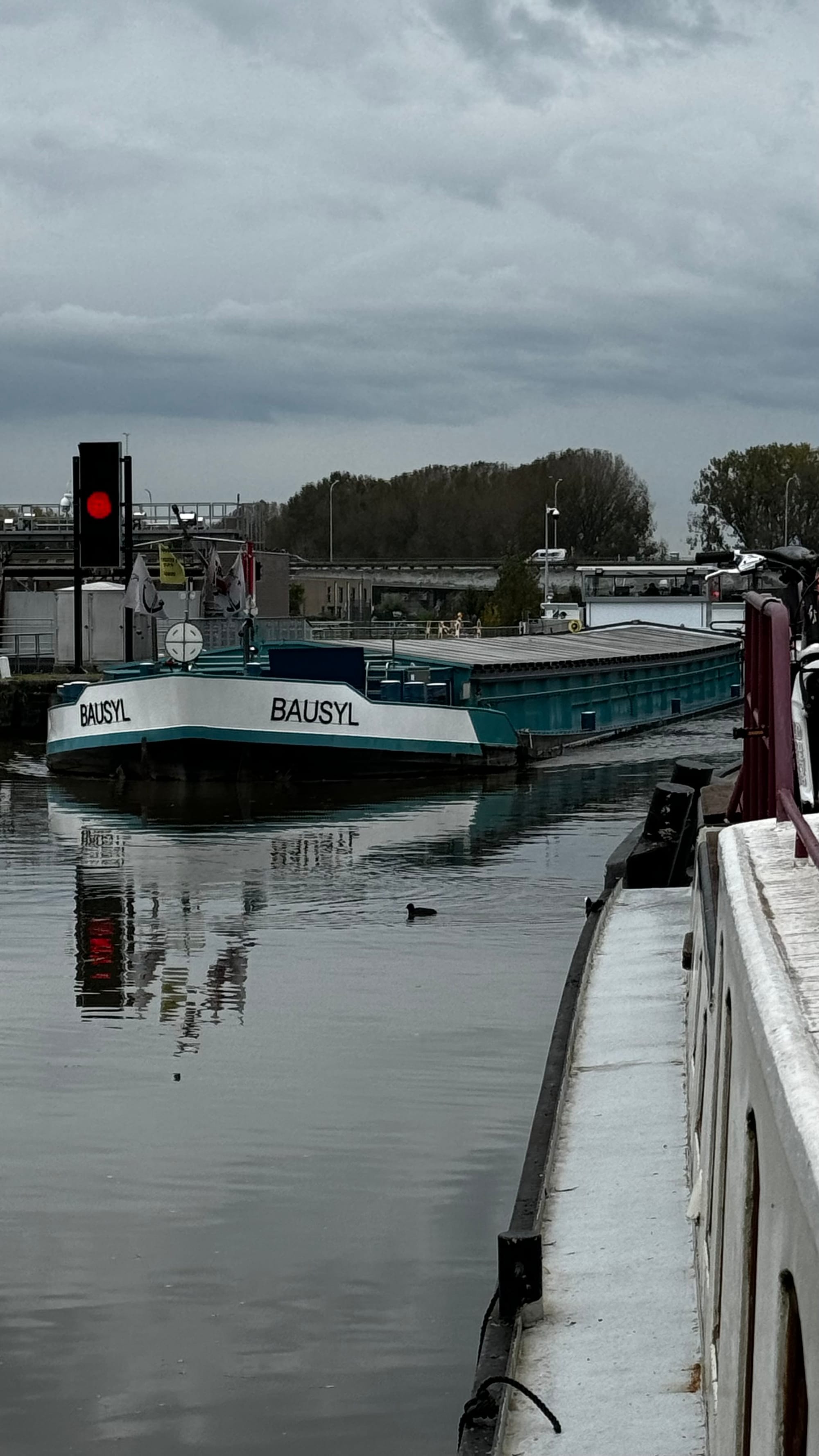
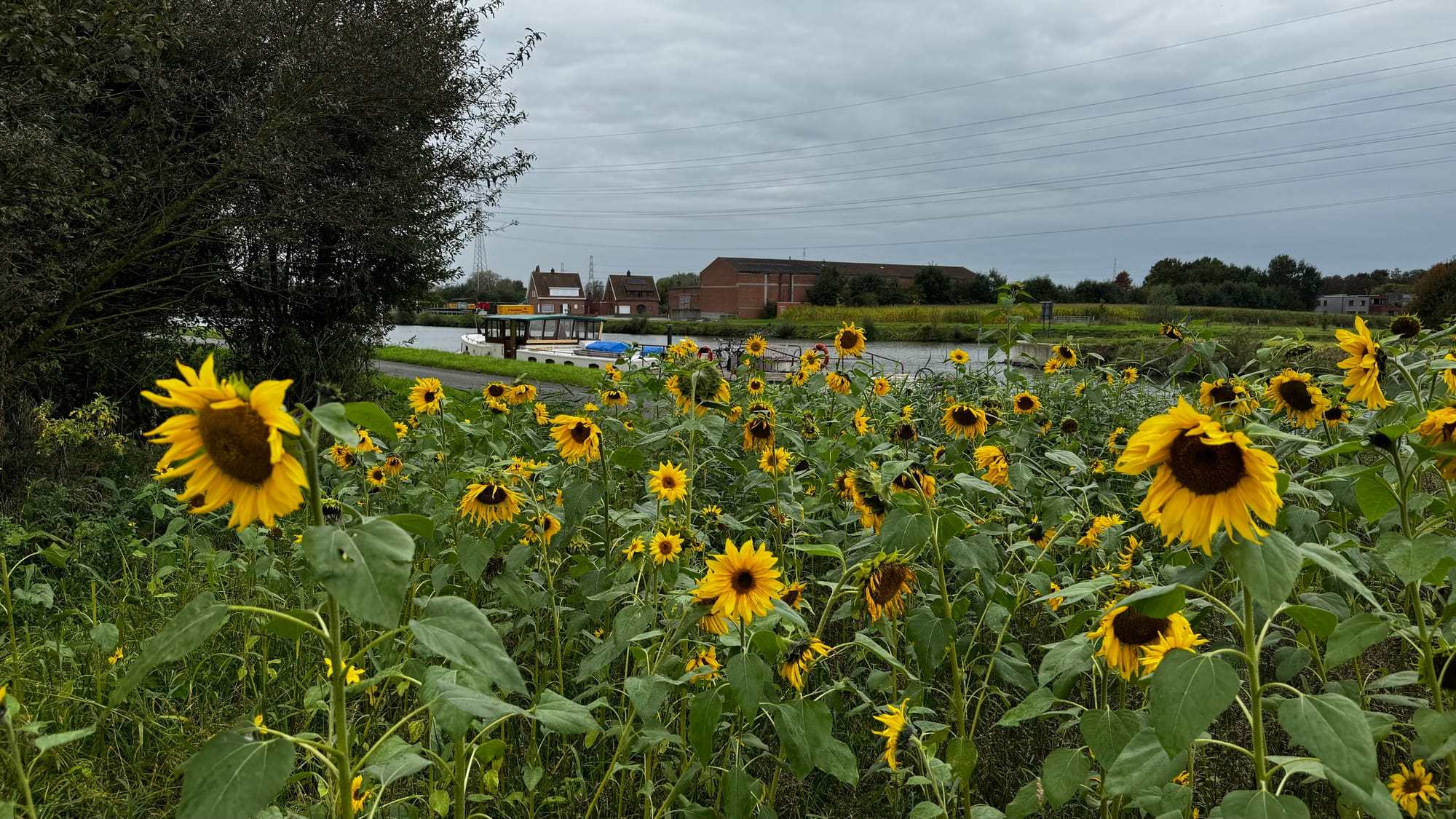
Can't you tell! This is Belgium. It looks COMPLETELY different (actually the avenue of trees is in Belgium and stops in France)
We have a massive sense of achievement, though. We've done it. We made it all this way and feel so much more confident and capable of navigating a larger boat. There's still more to learn, as the larger locks have taught us, but that's not a significant problem. We're getting it done! There's also a sense of completing the circle. Clair de Lune has returned to her home. Gent is only 40 km from Lokeren where she spent so much of her early life, and it feels right to restore her to her country of origin.
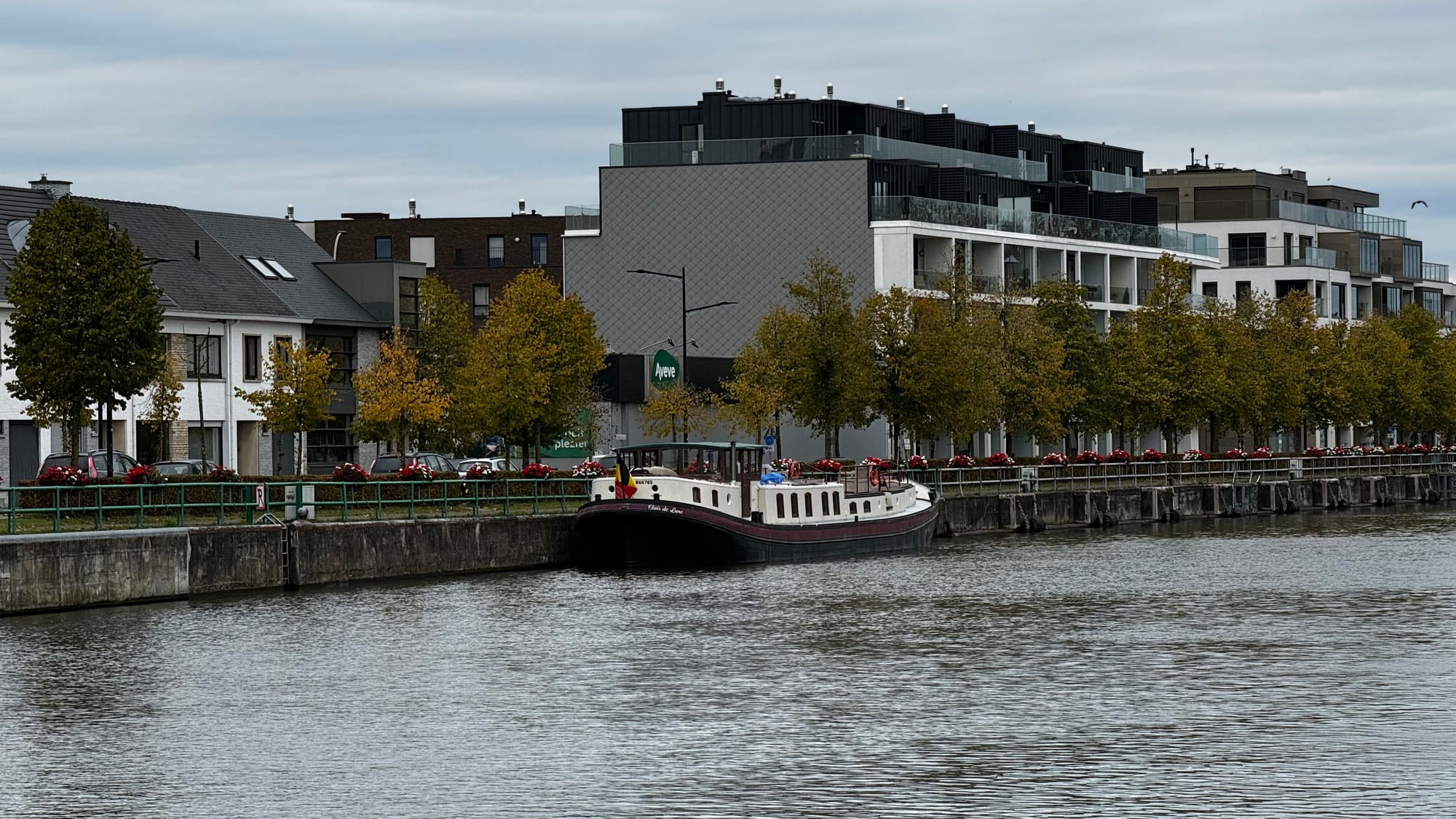
Until next time!
Tim & Karina.
